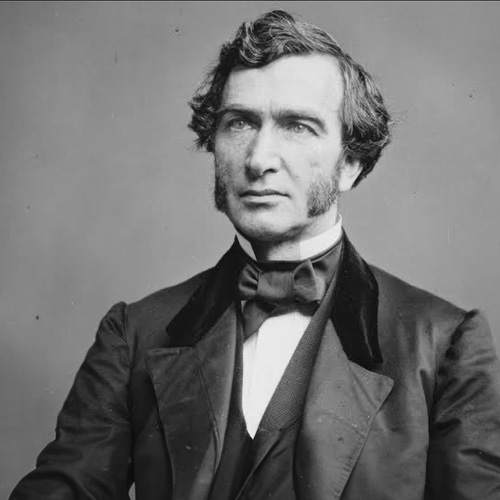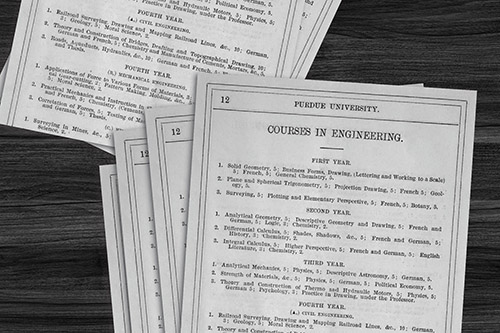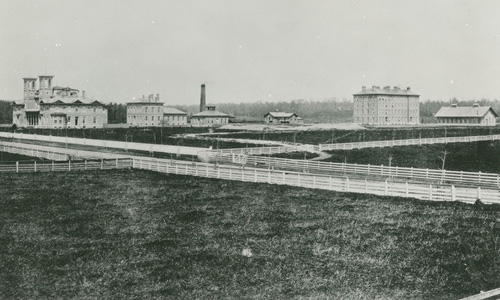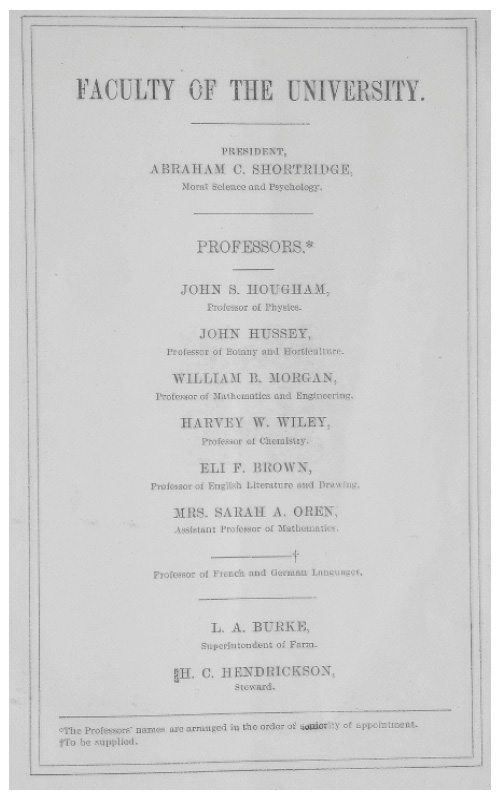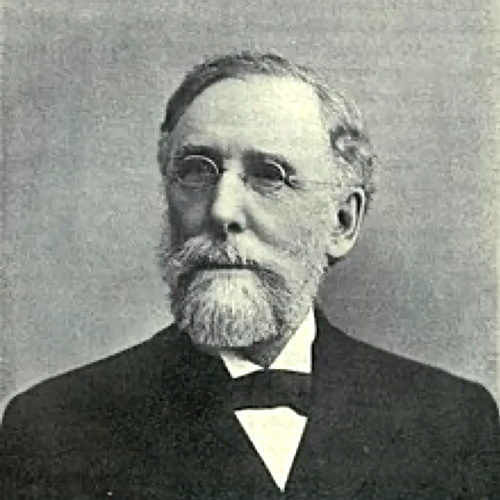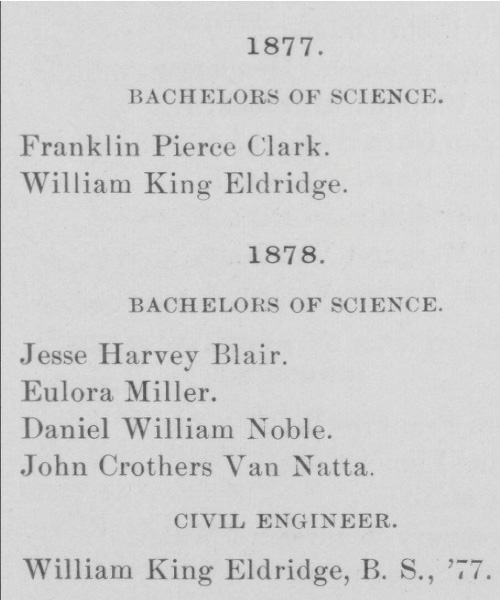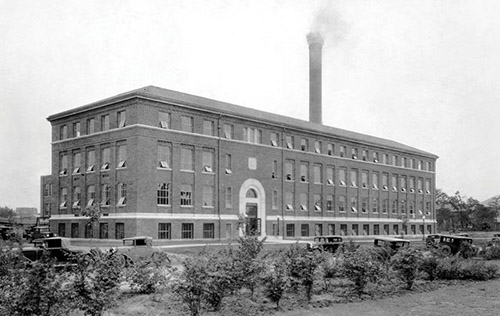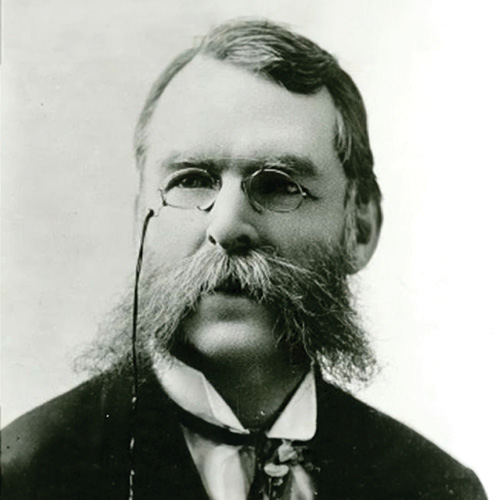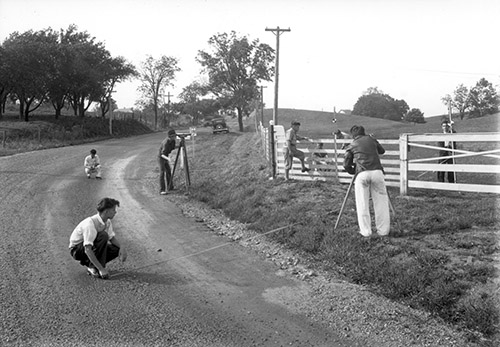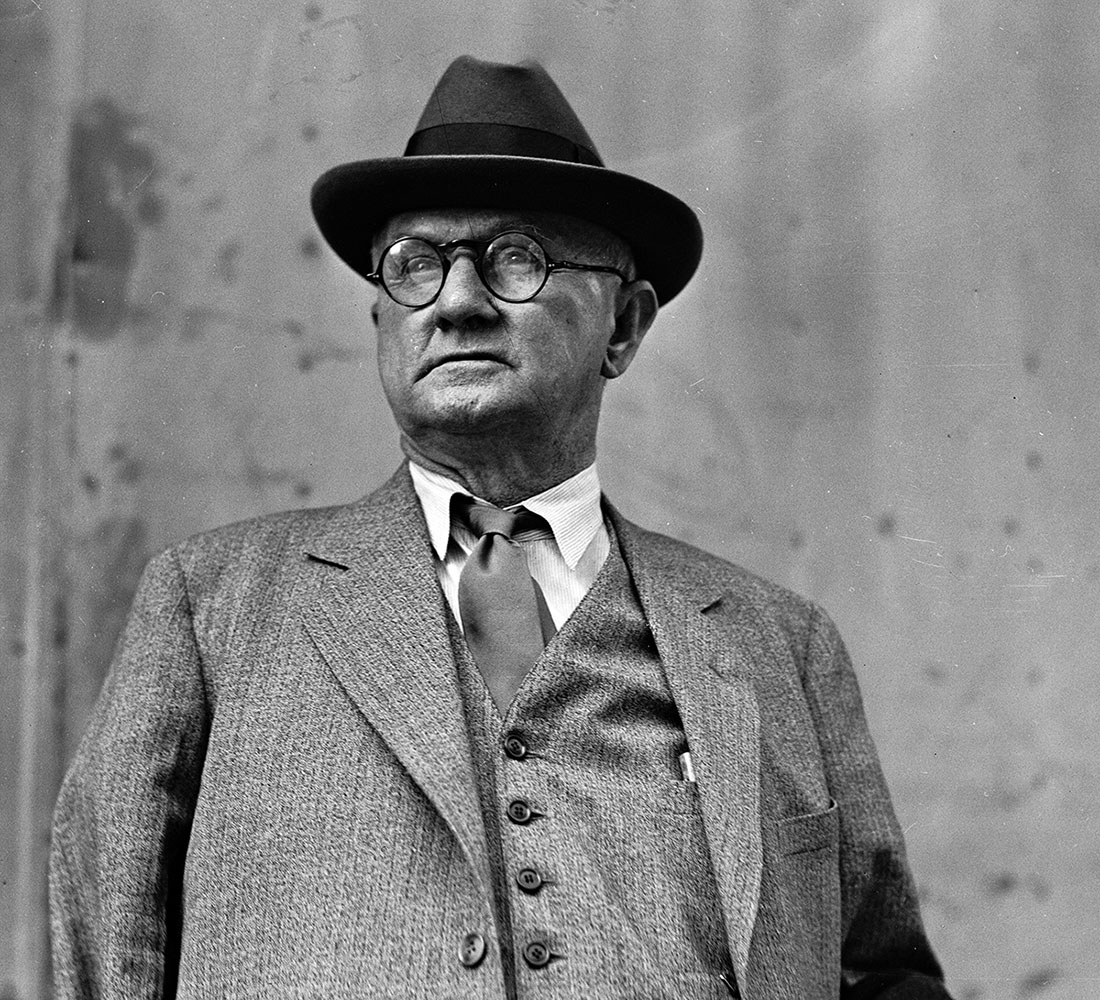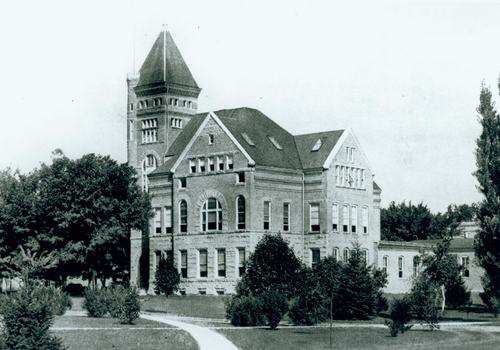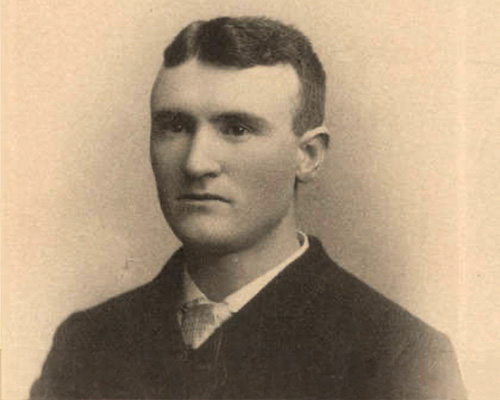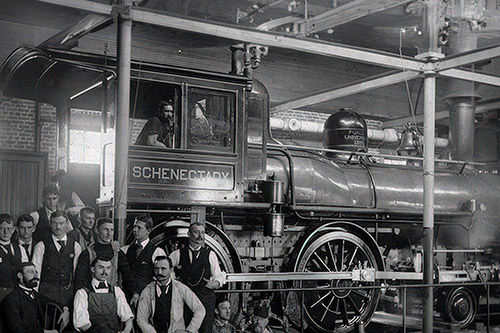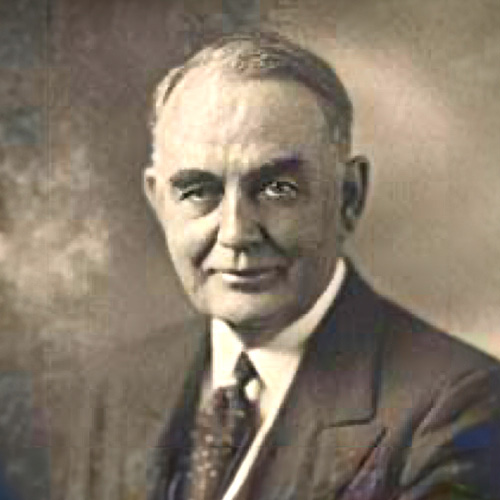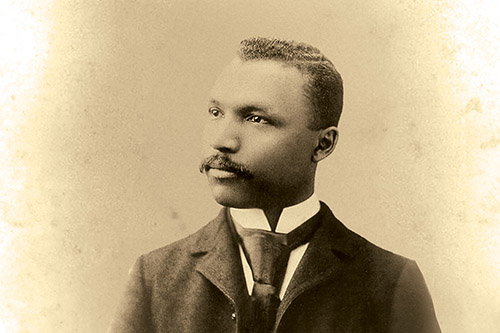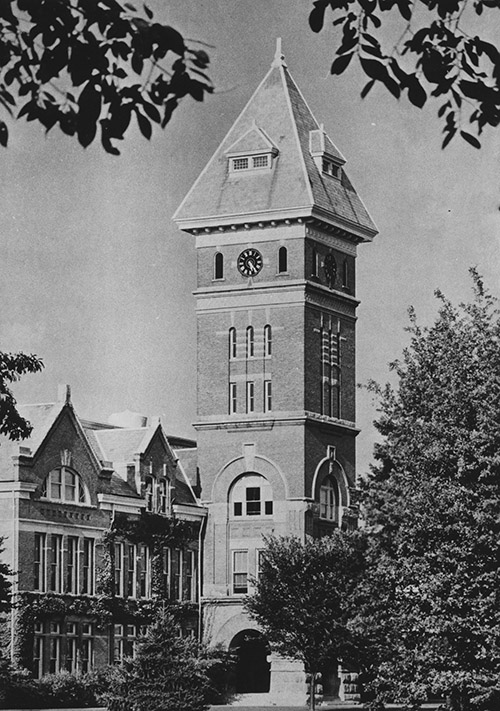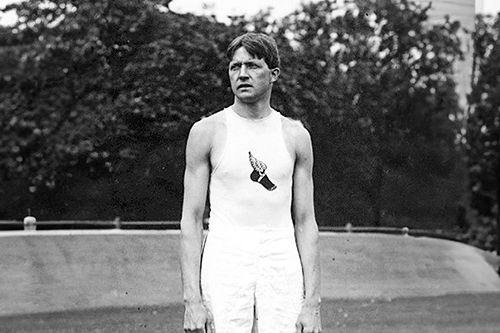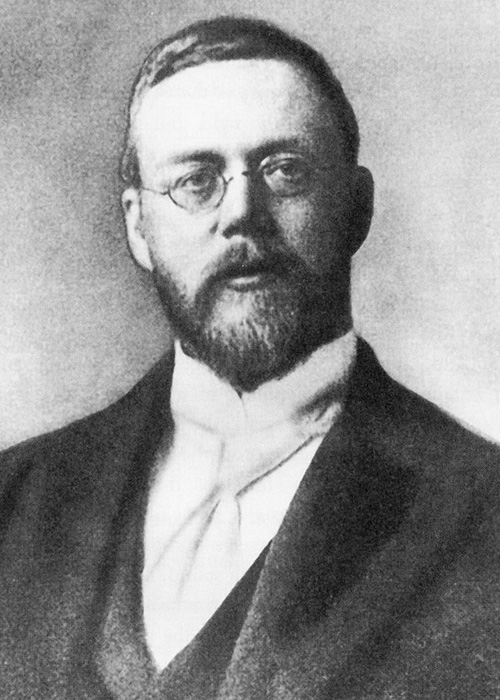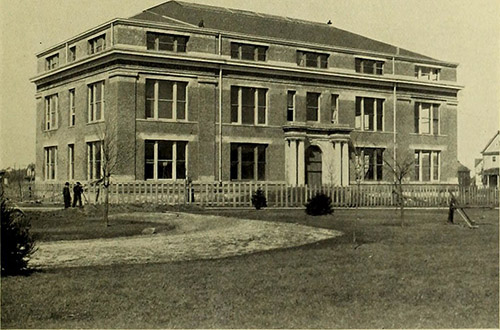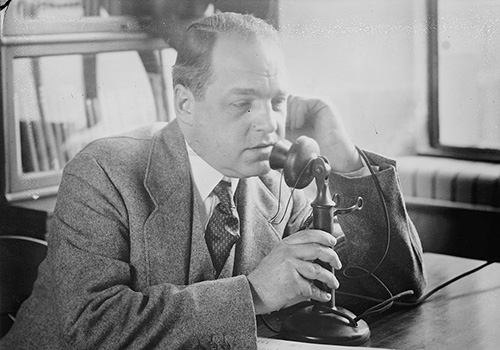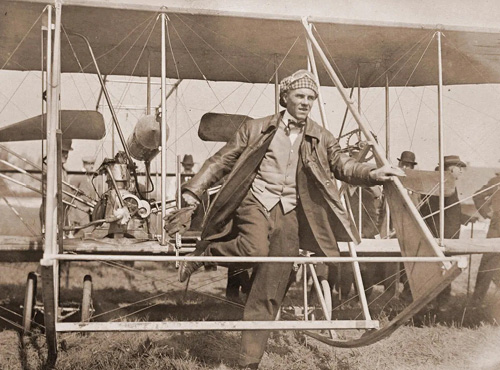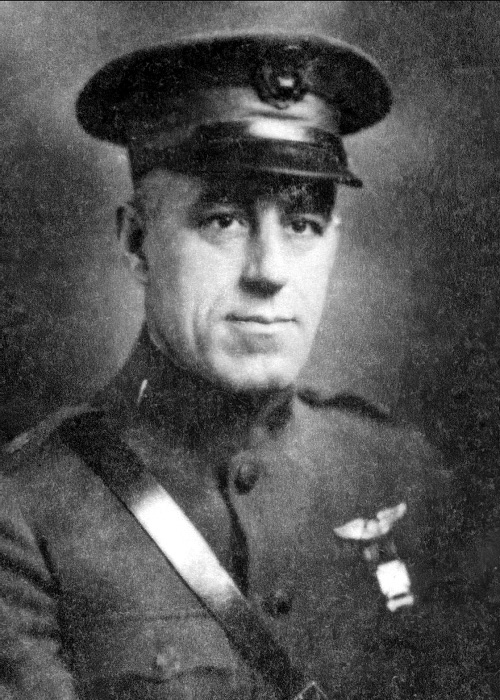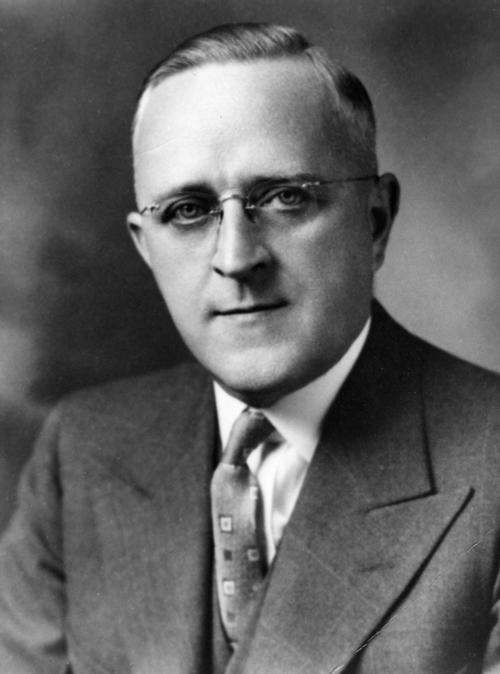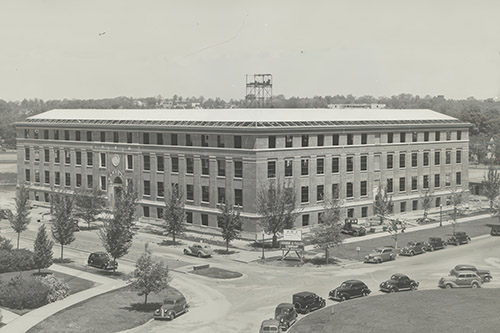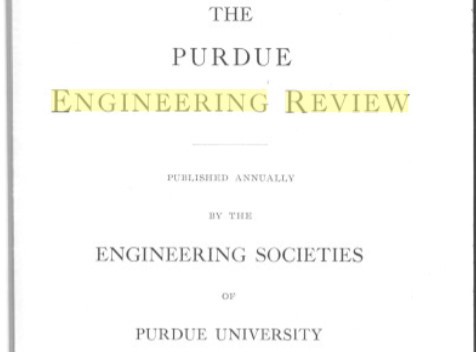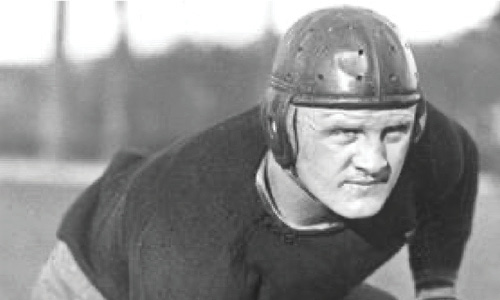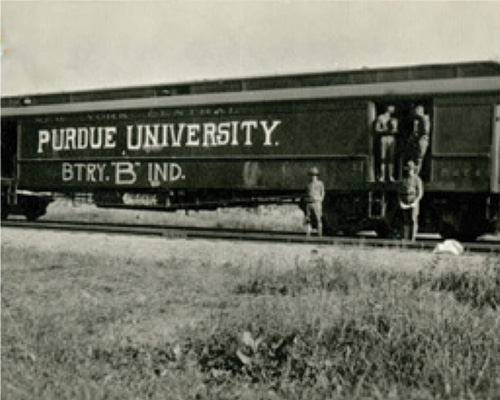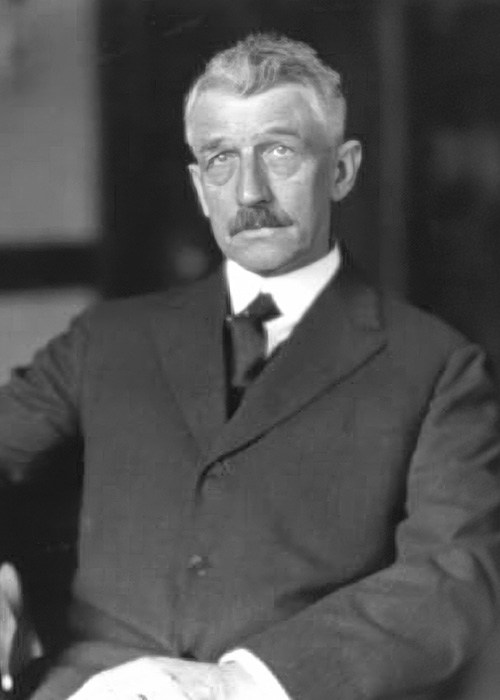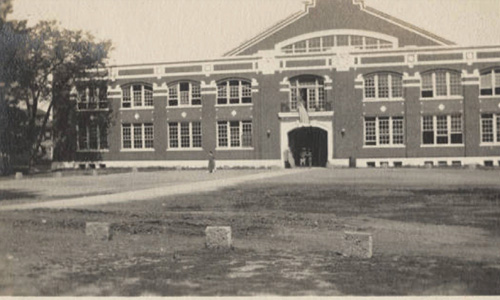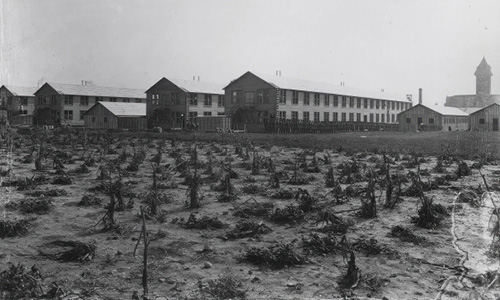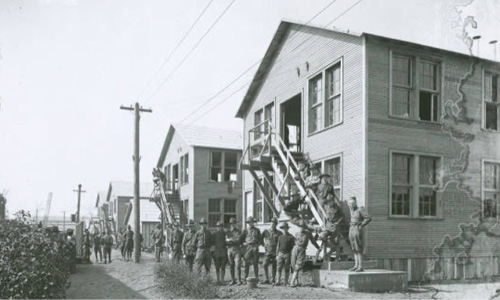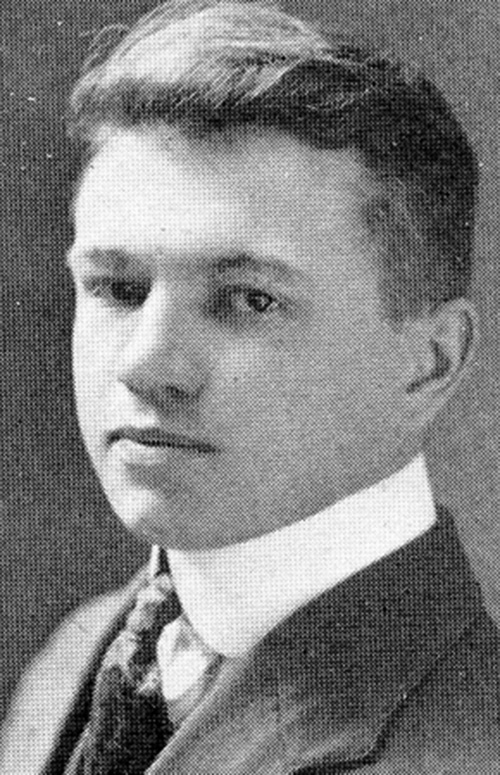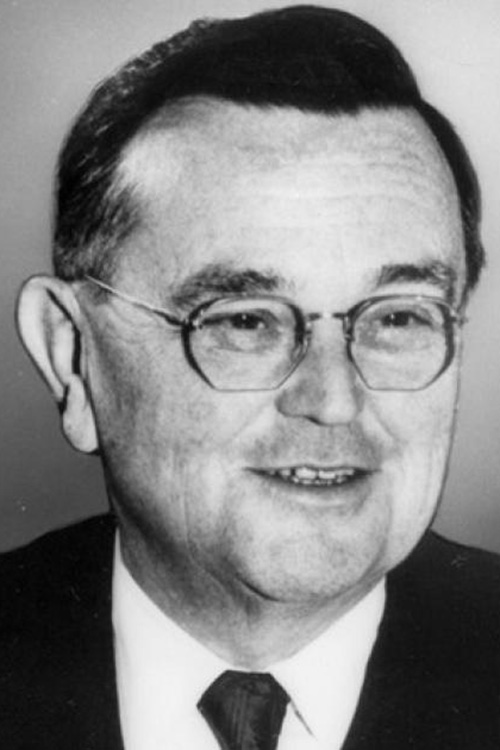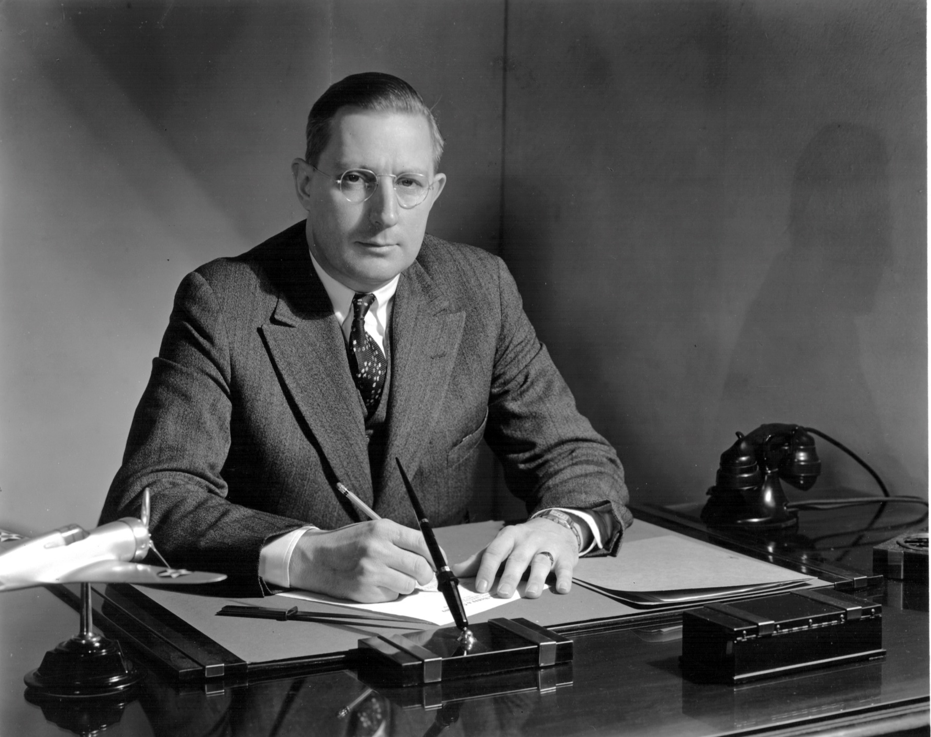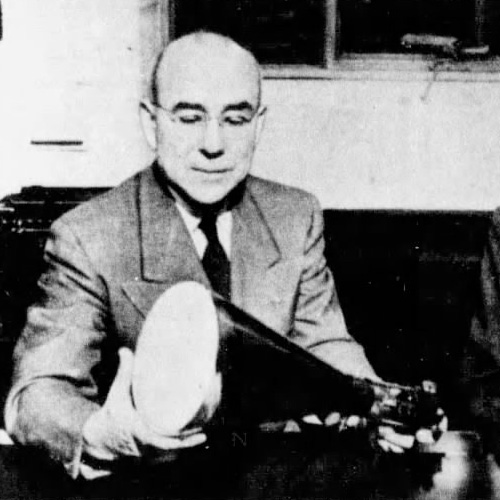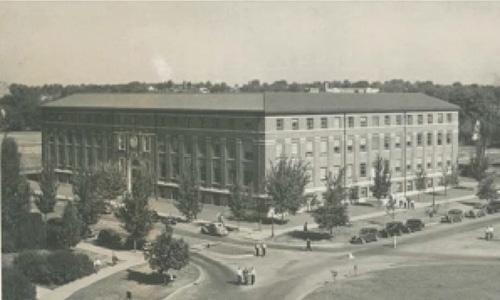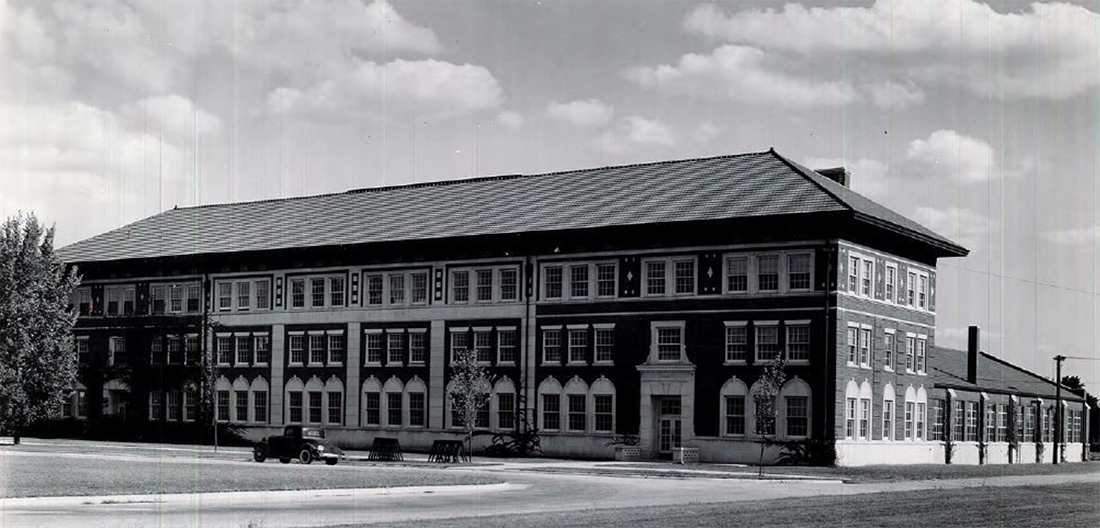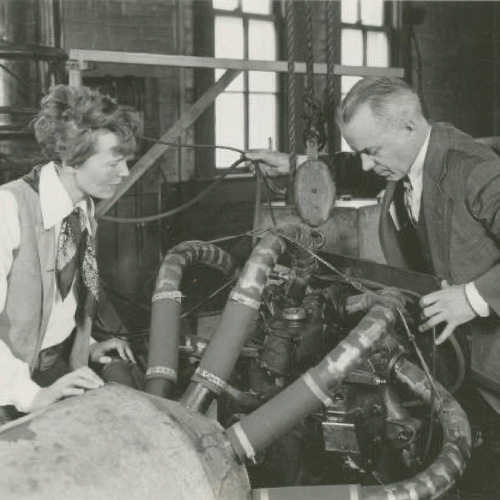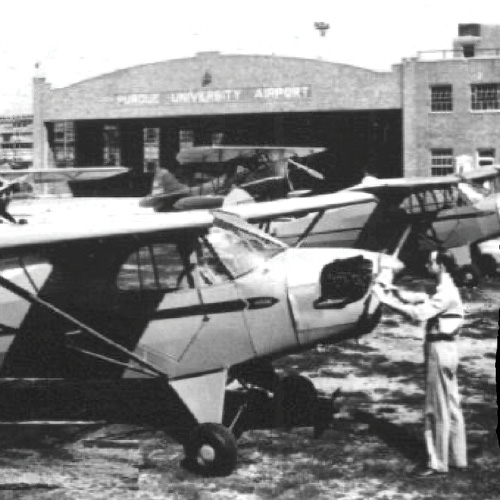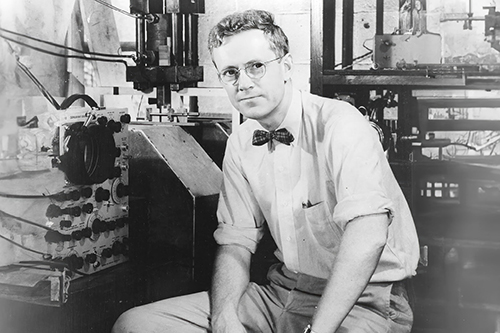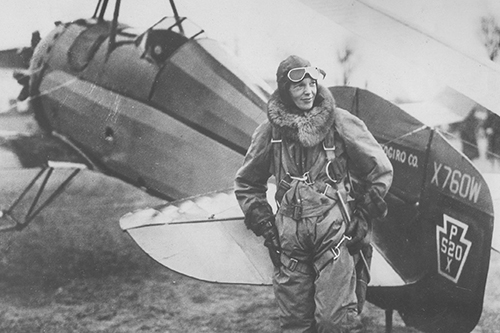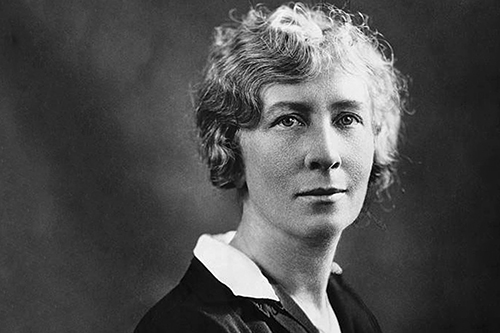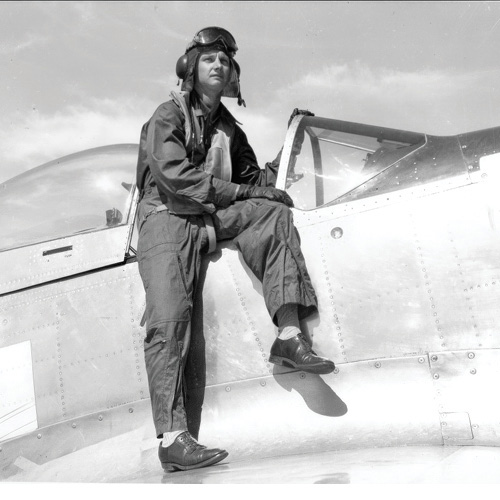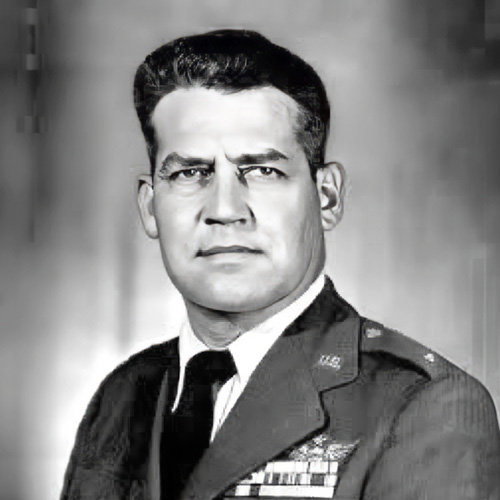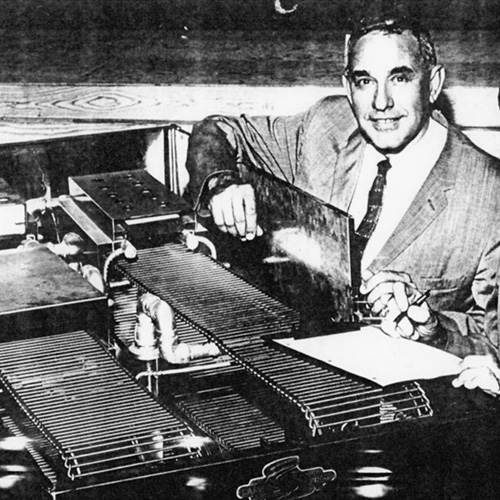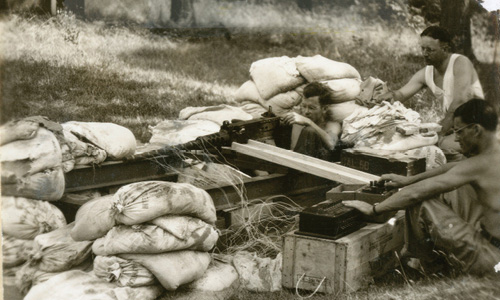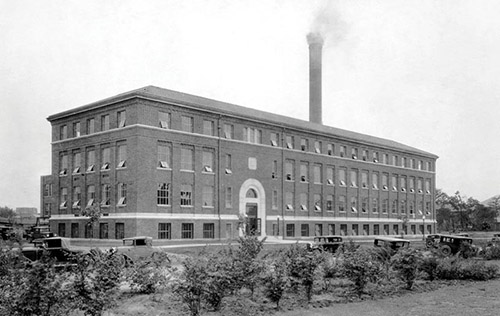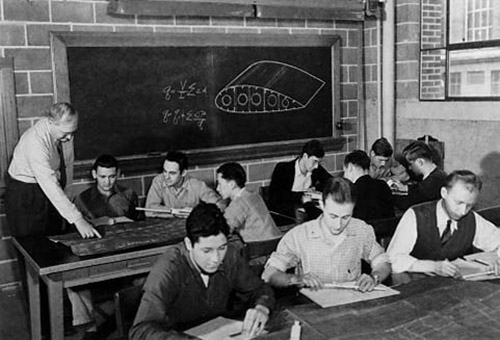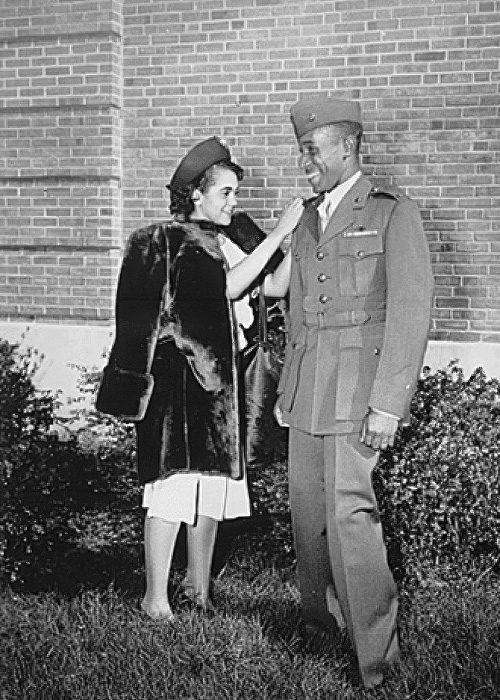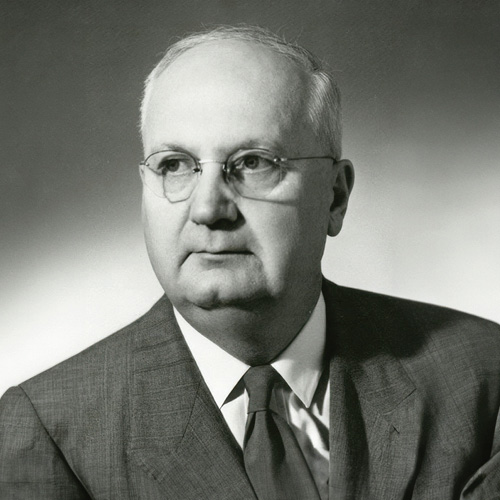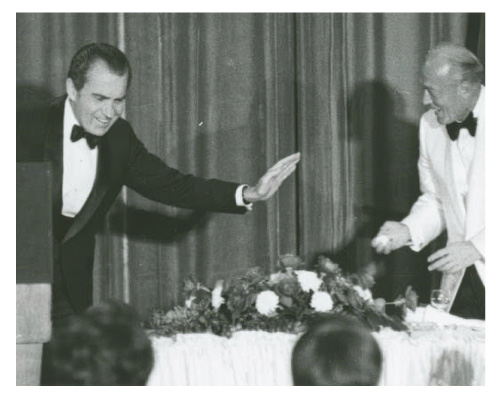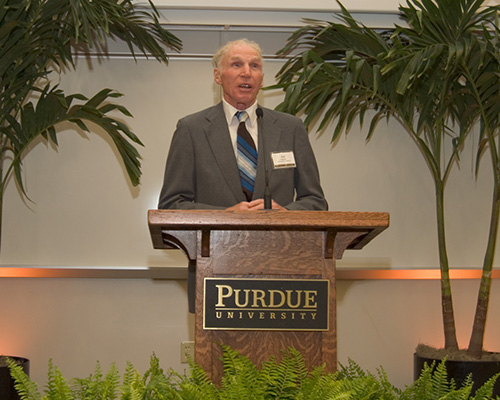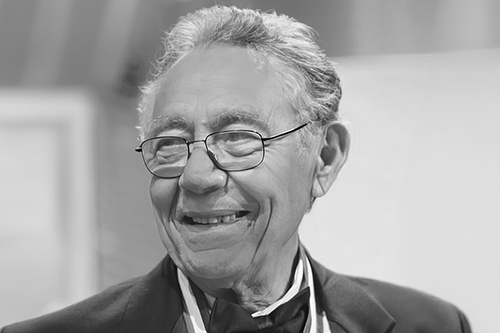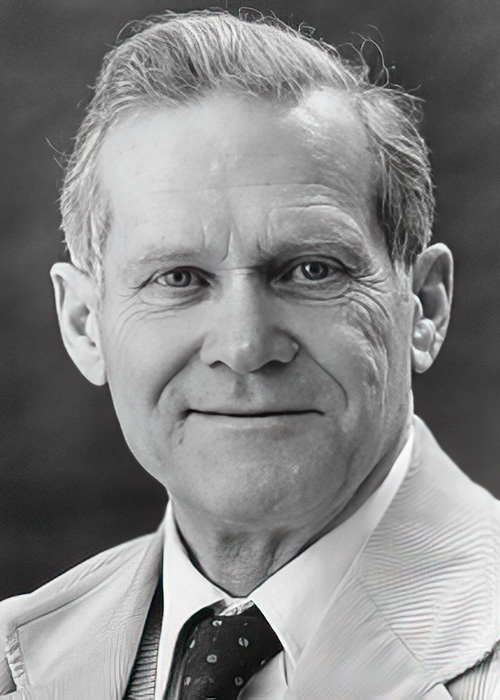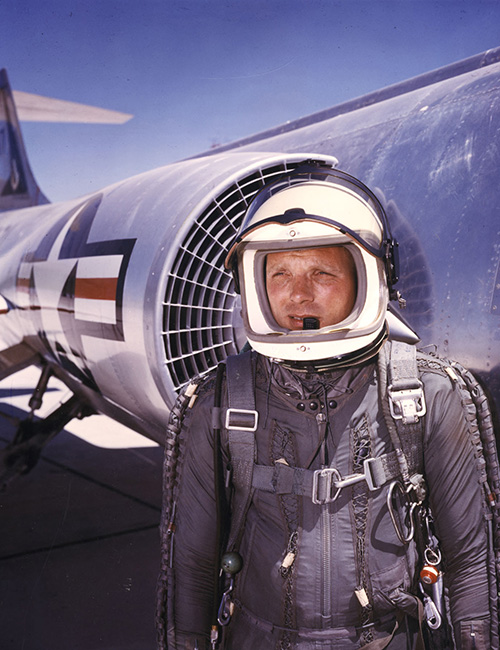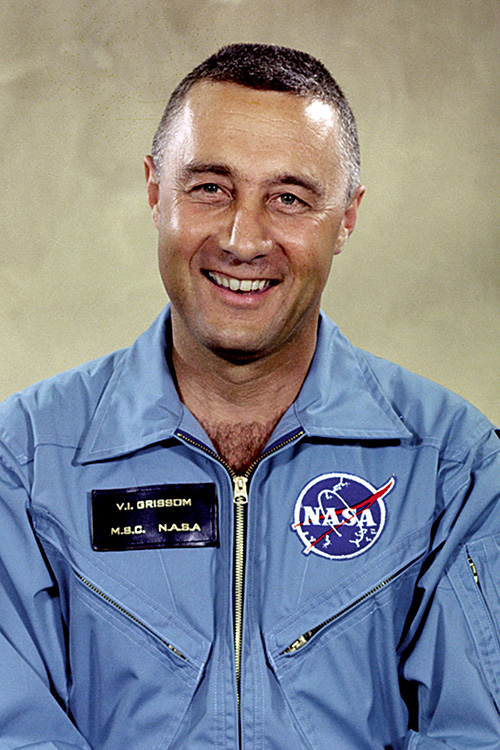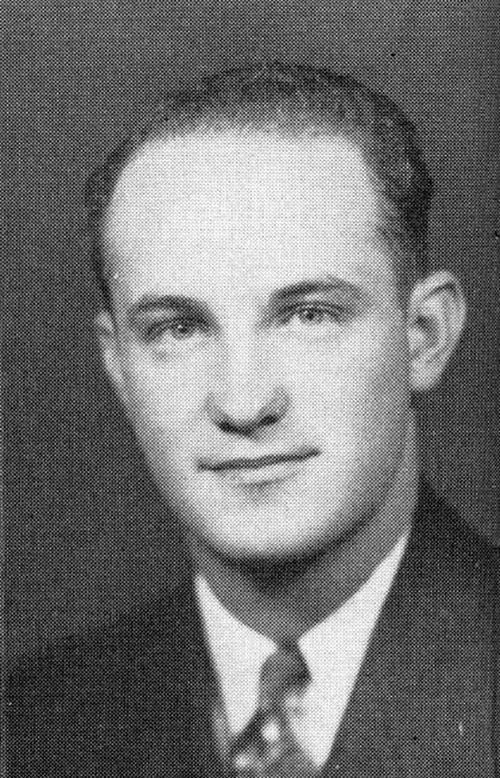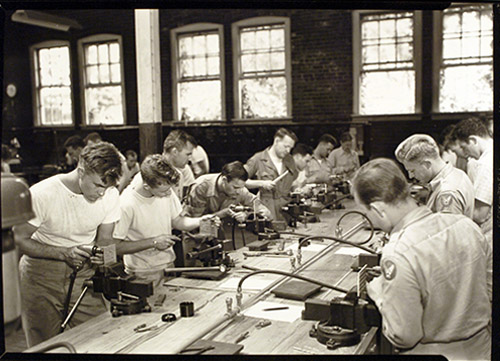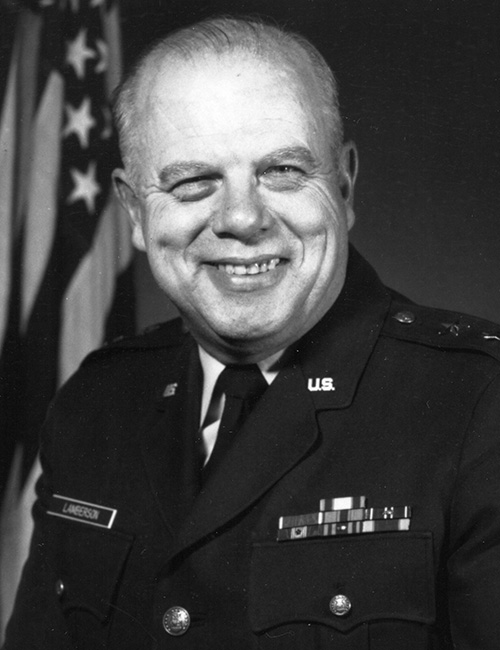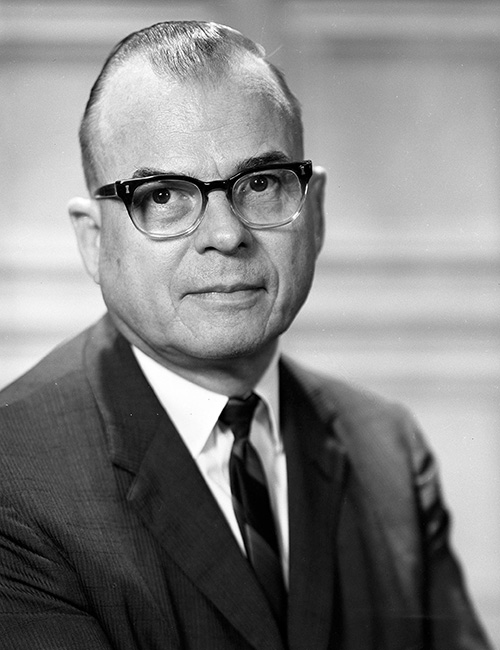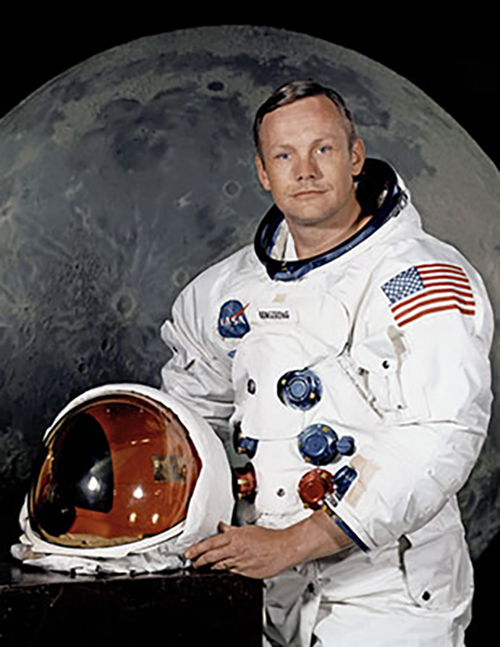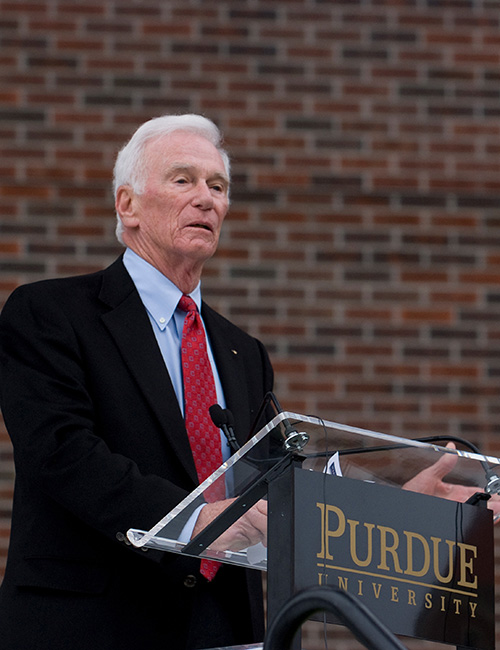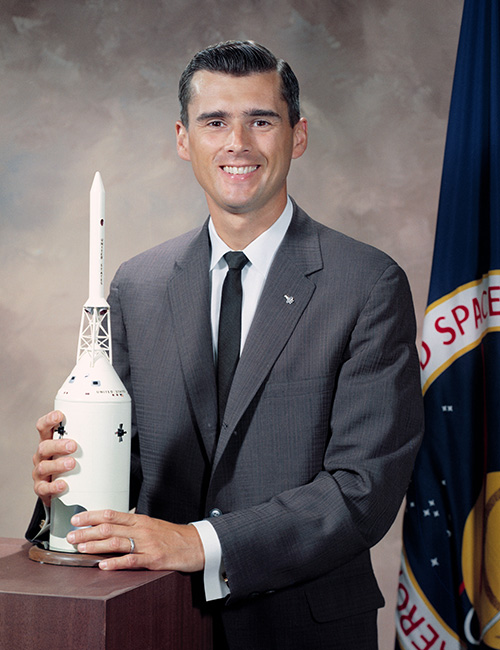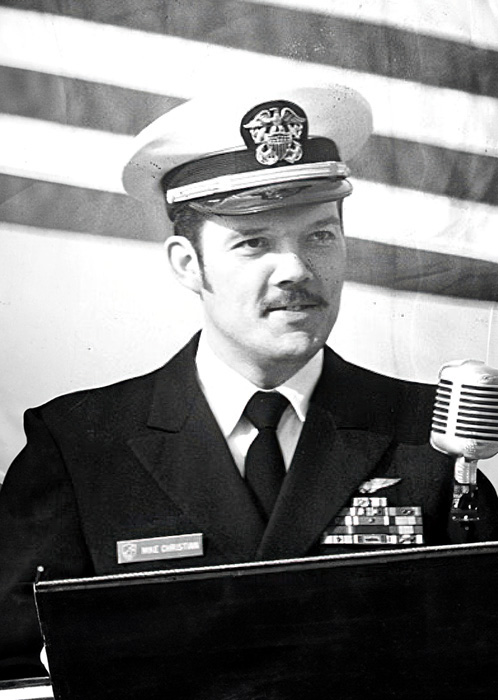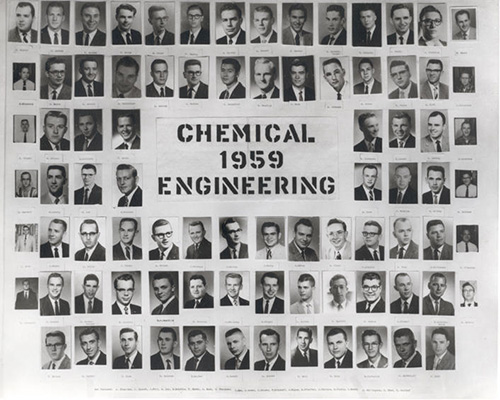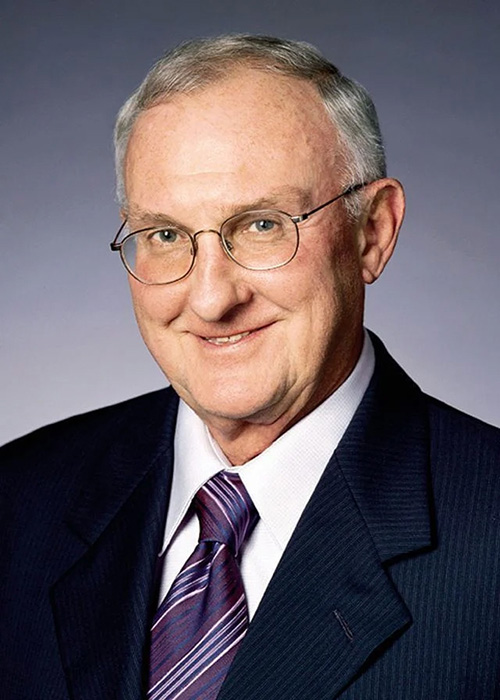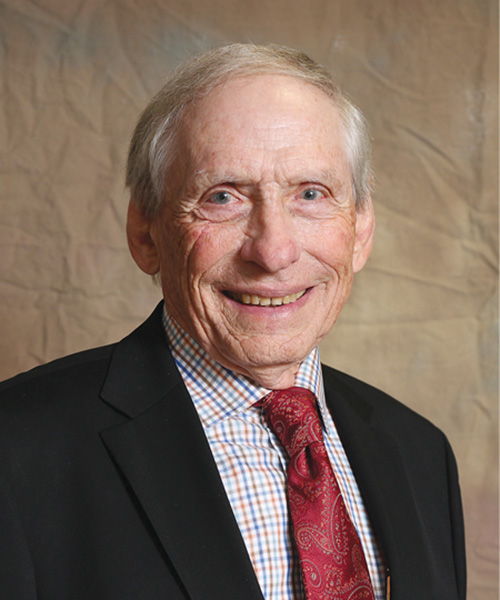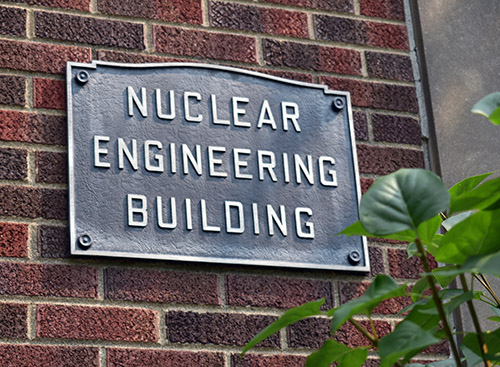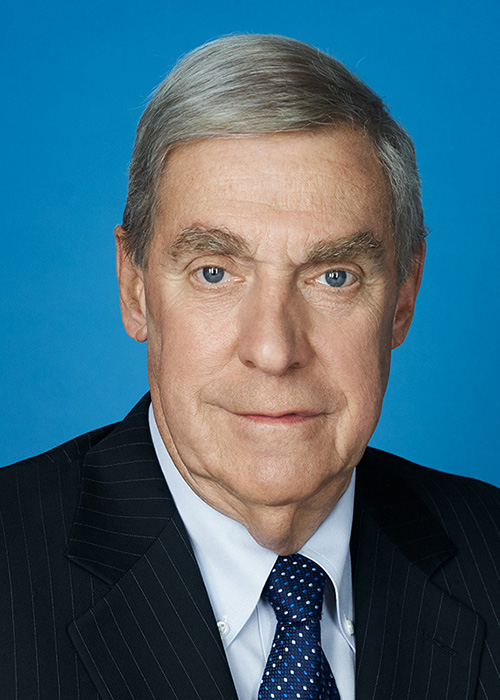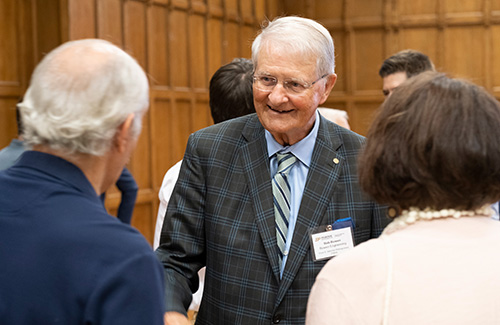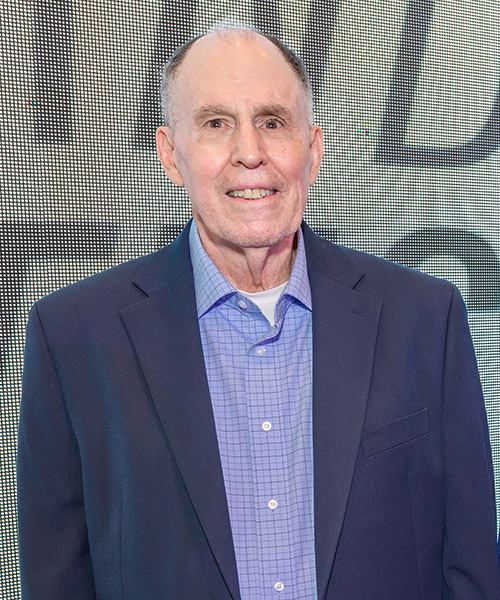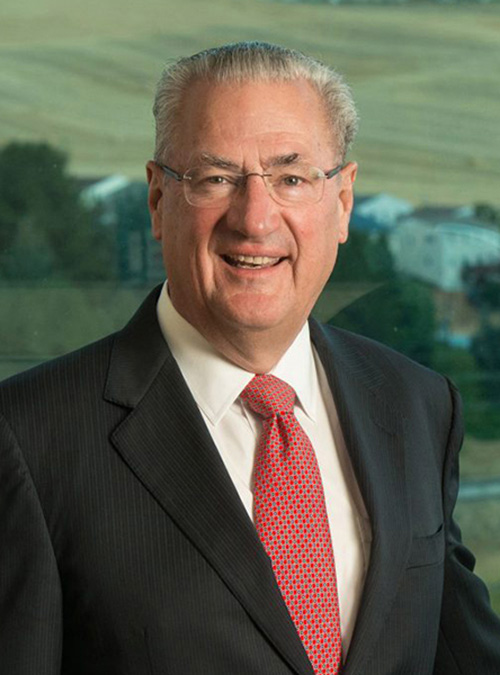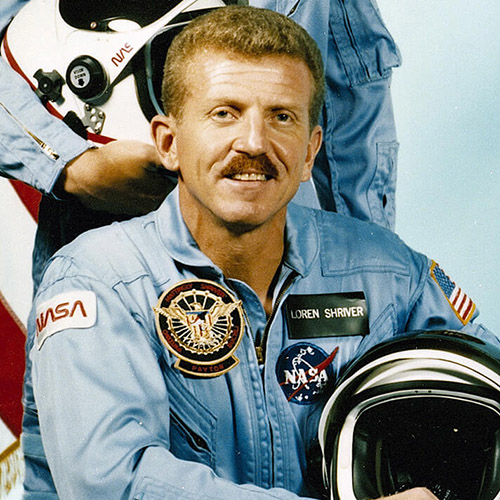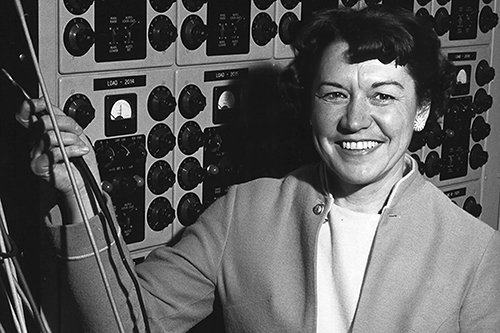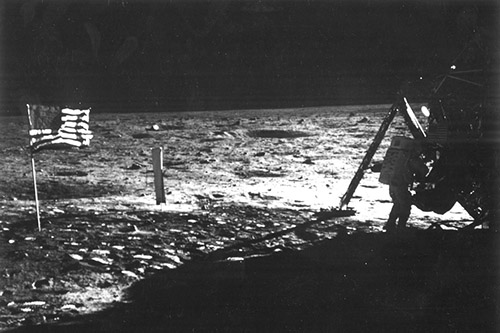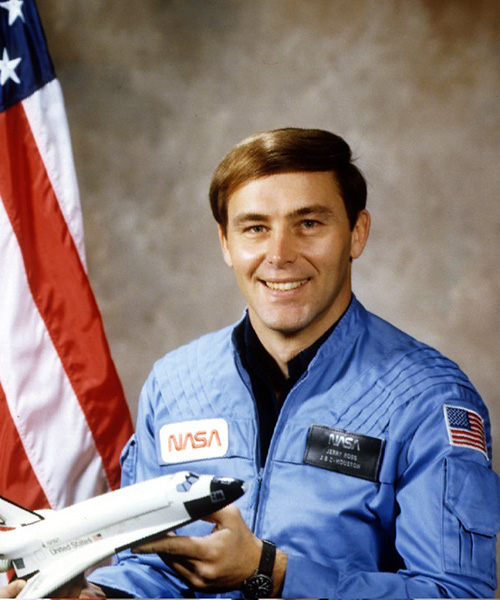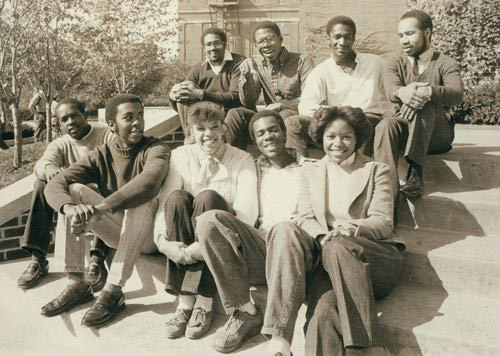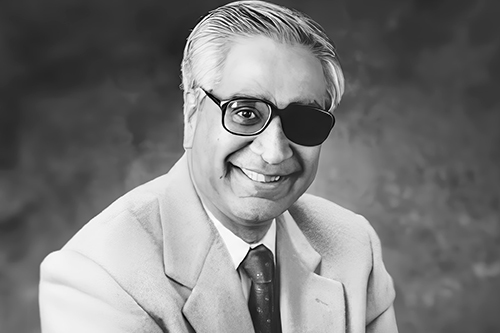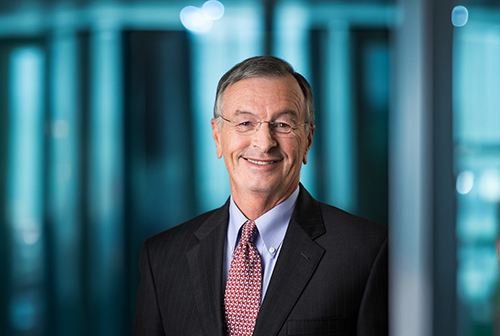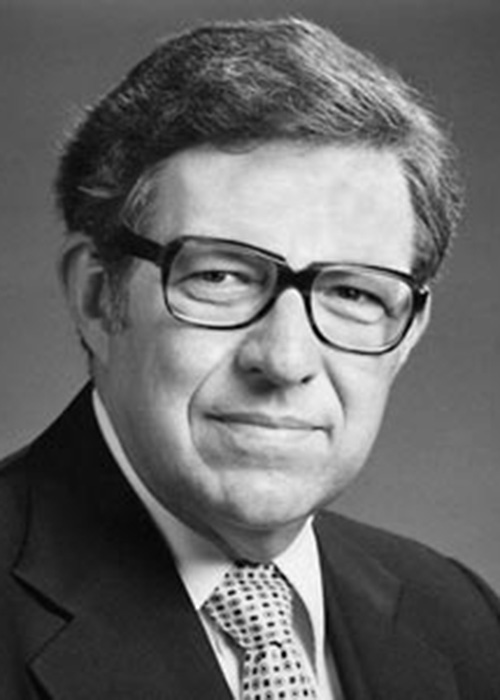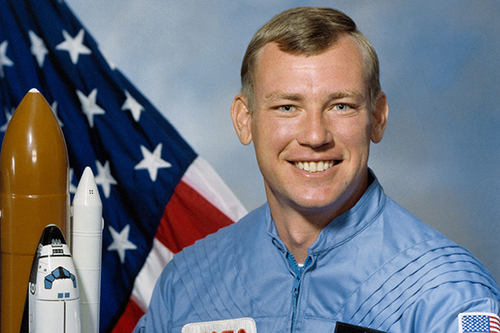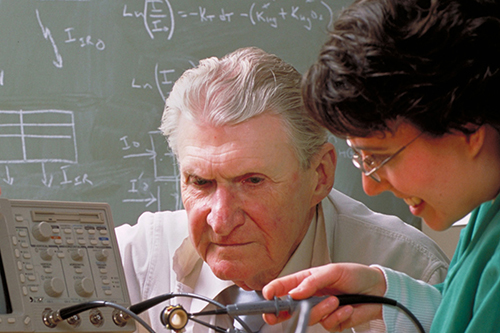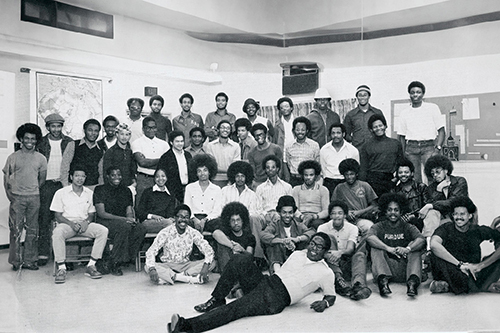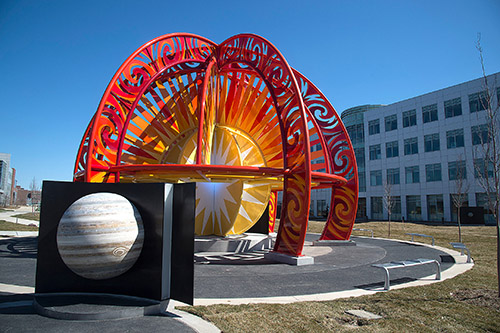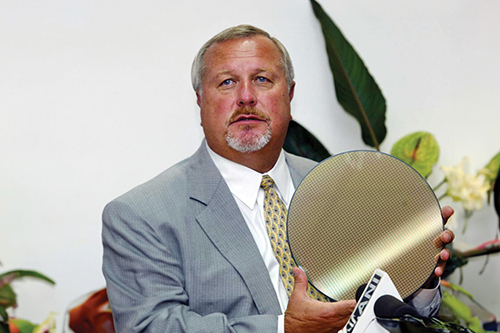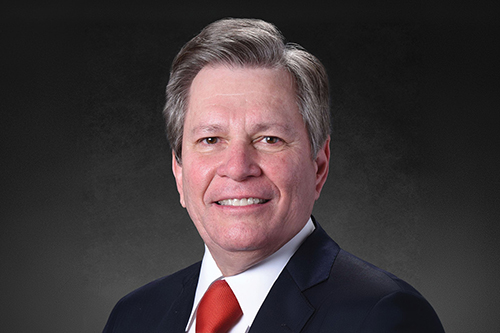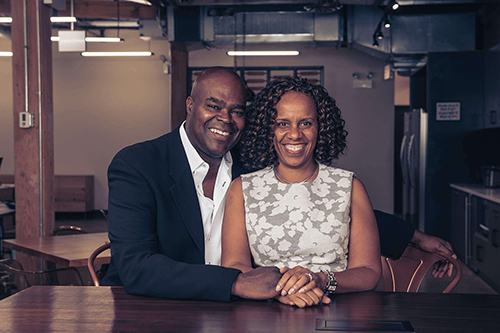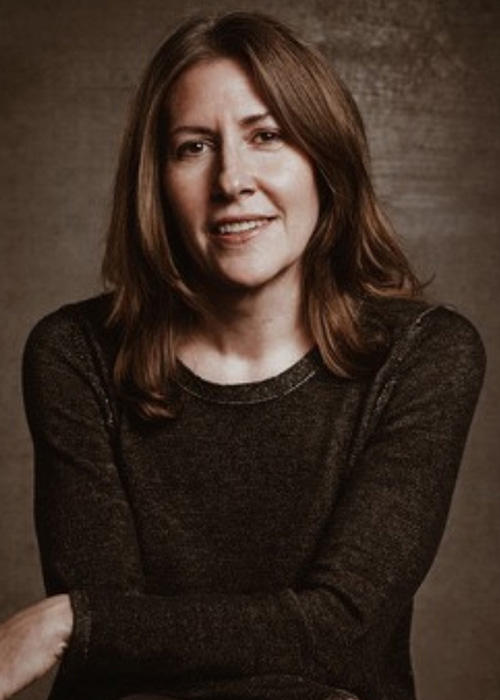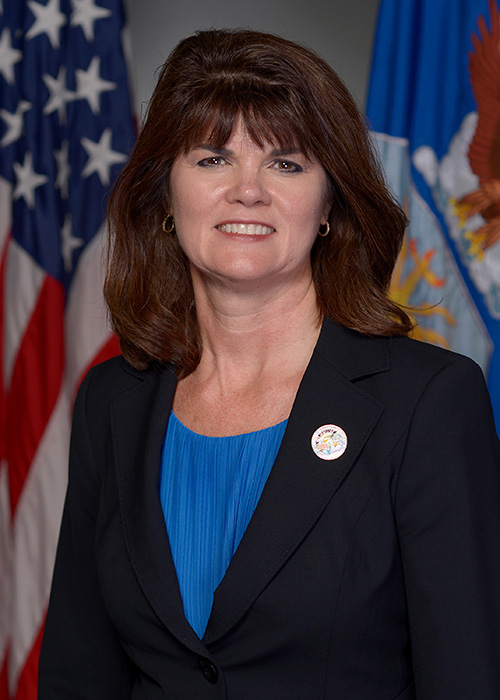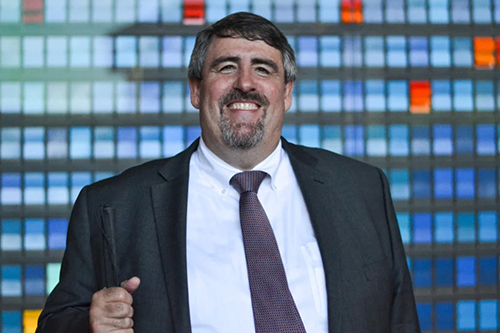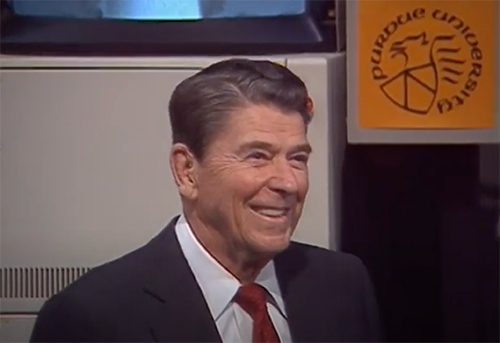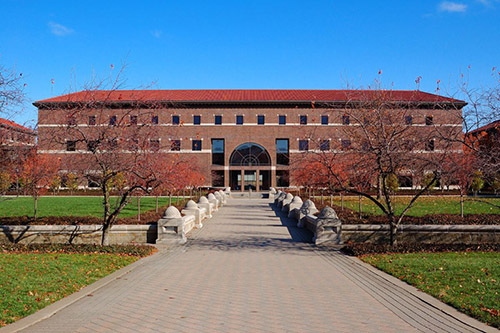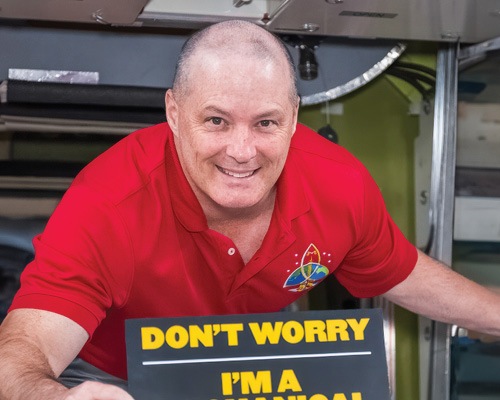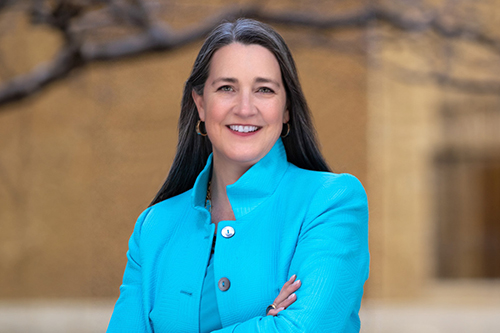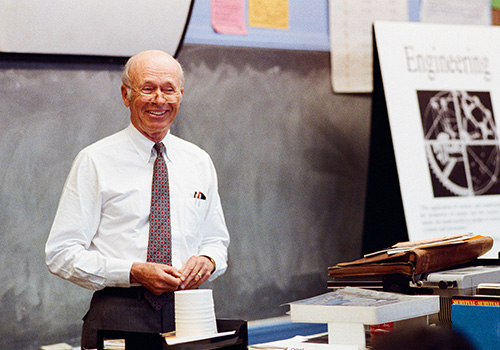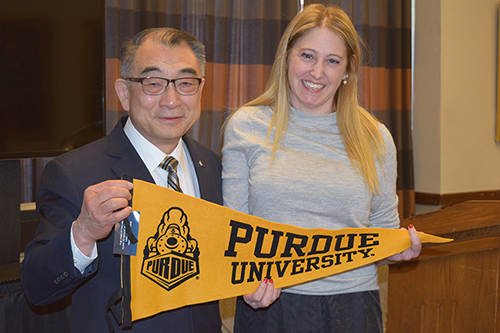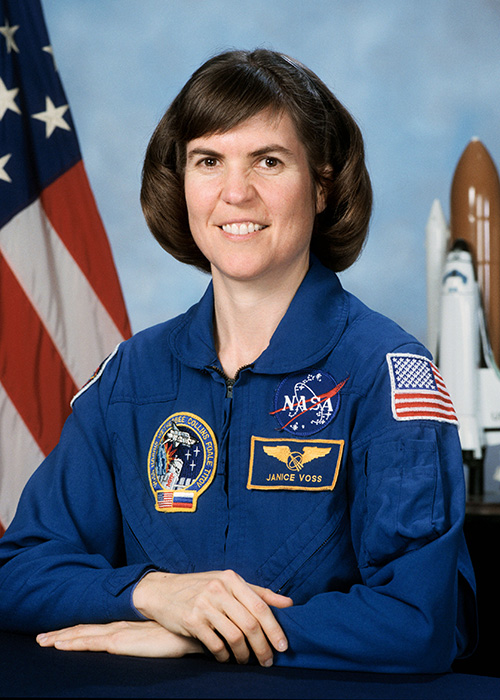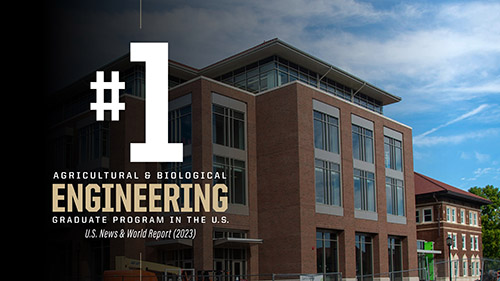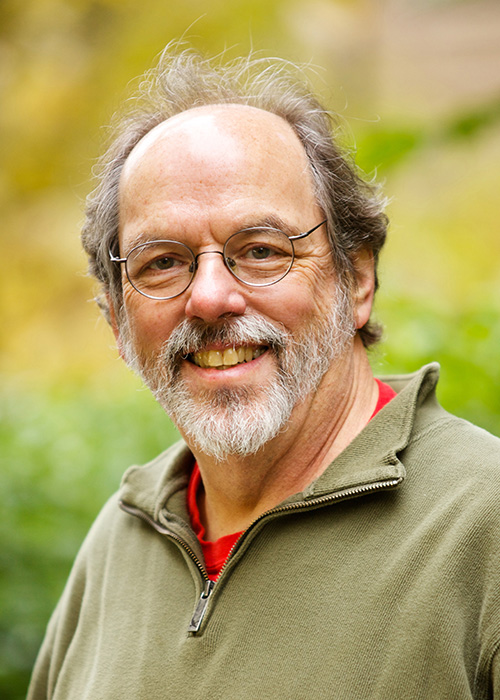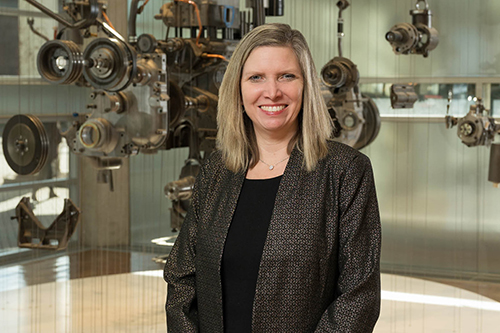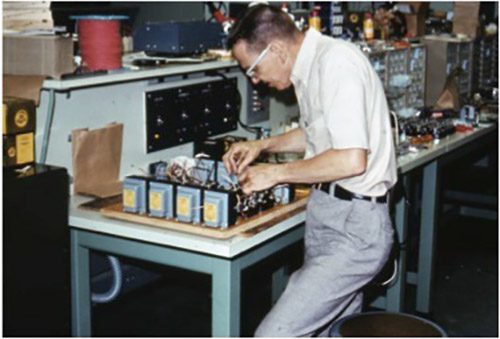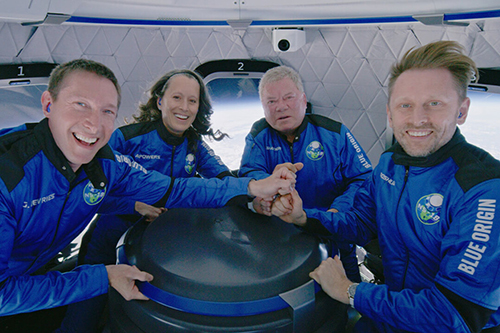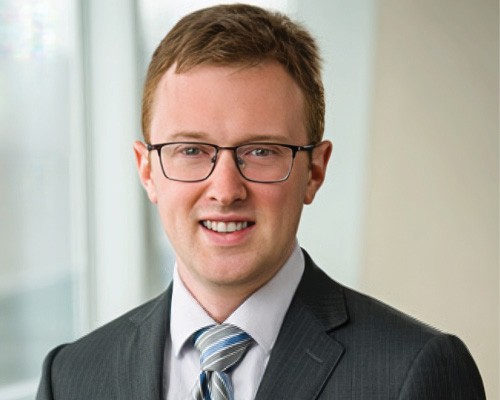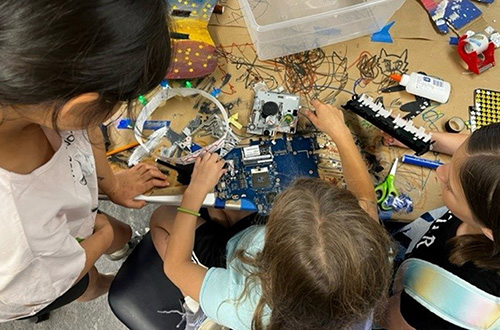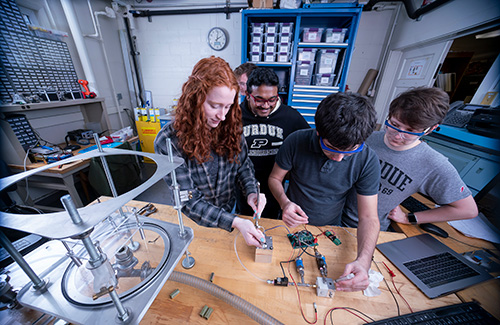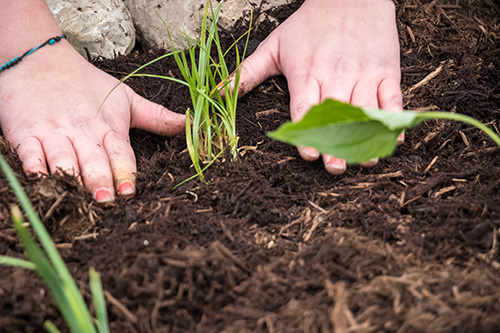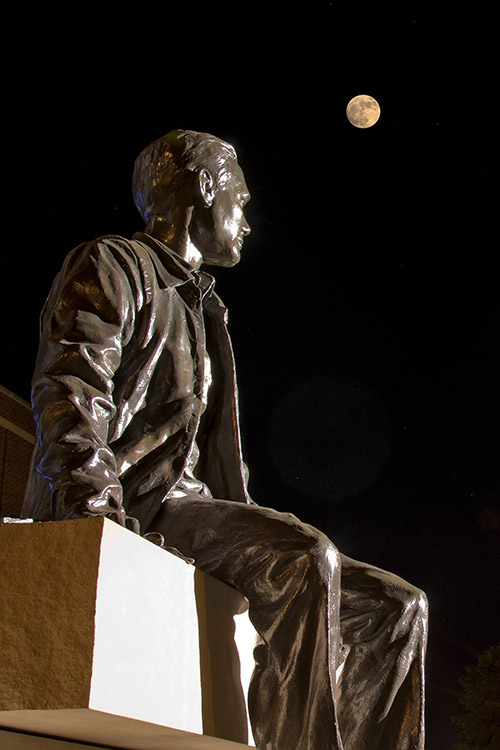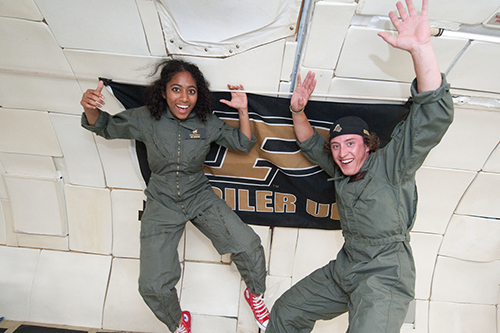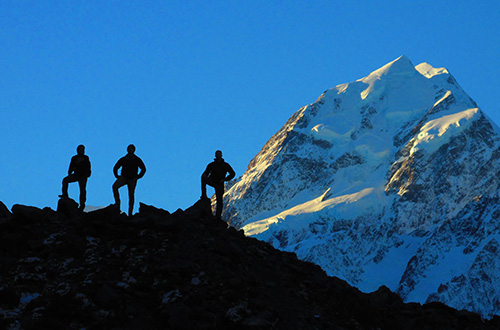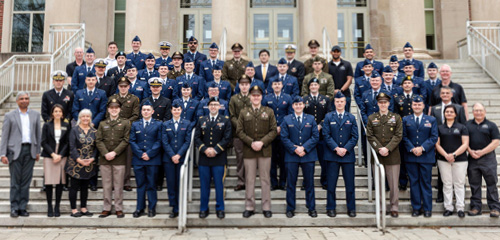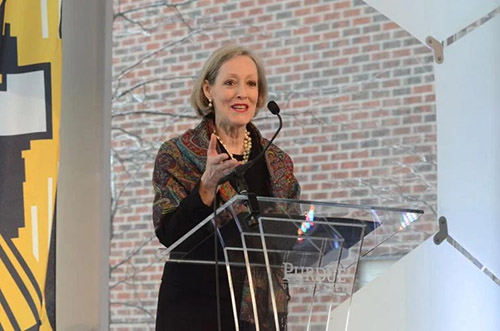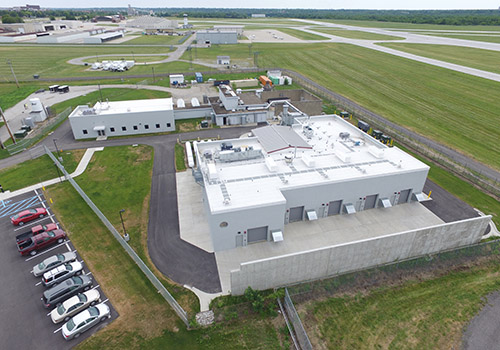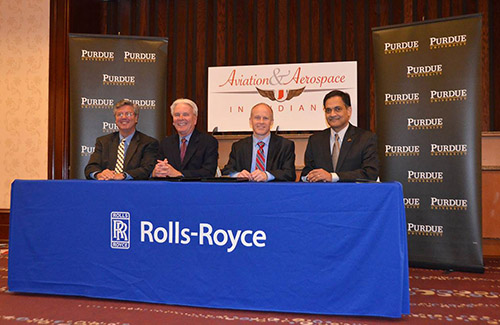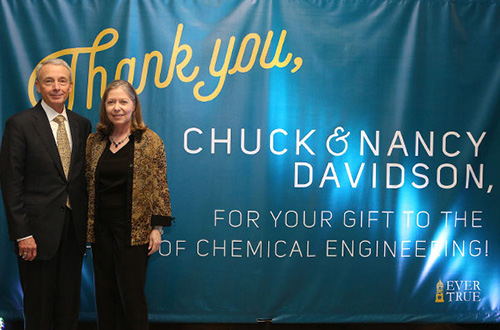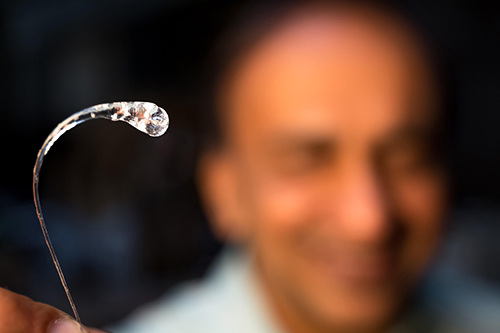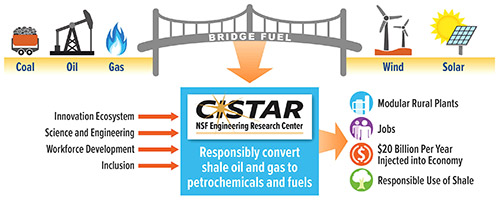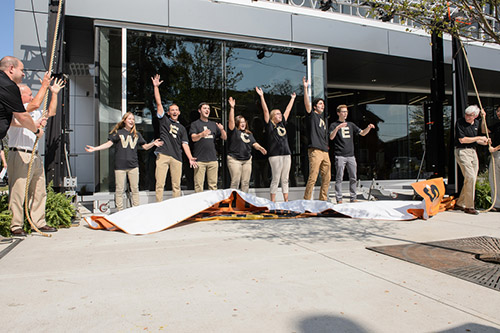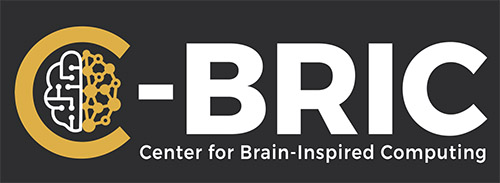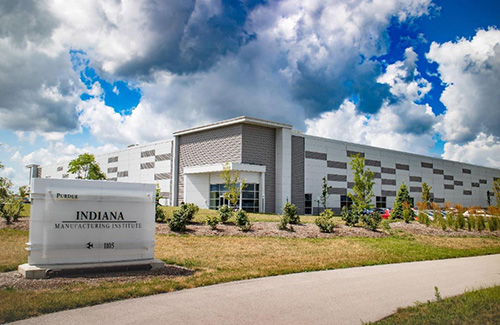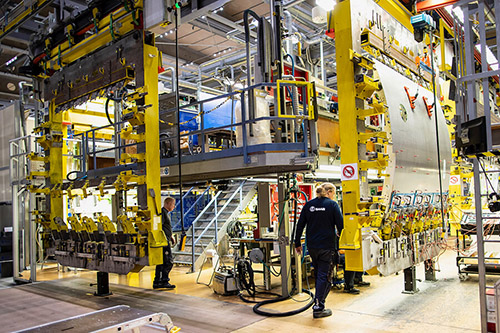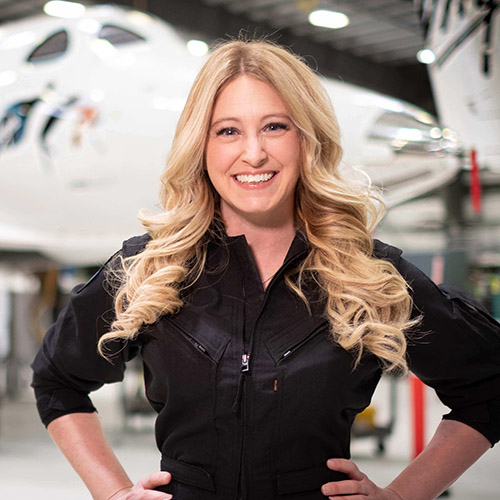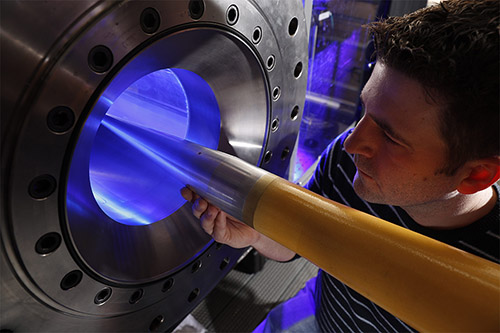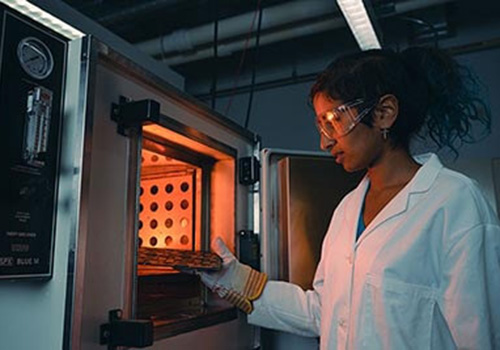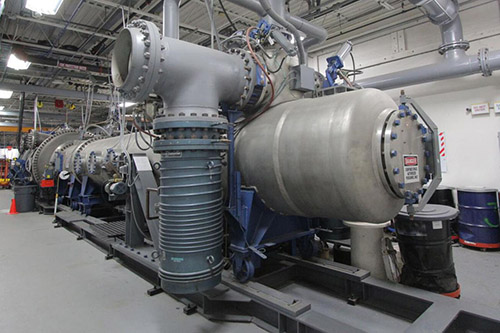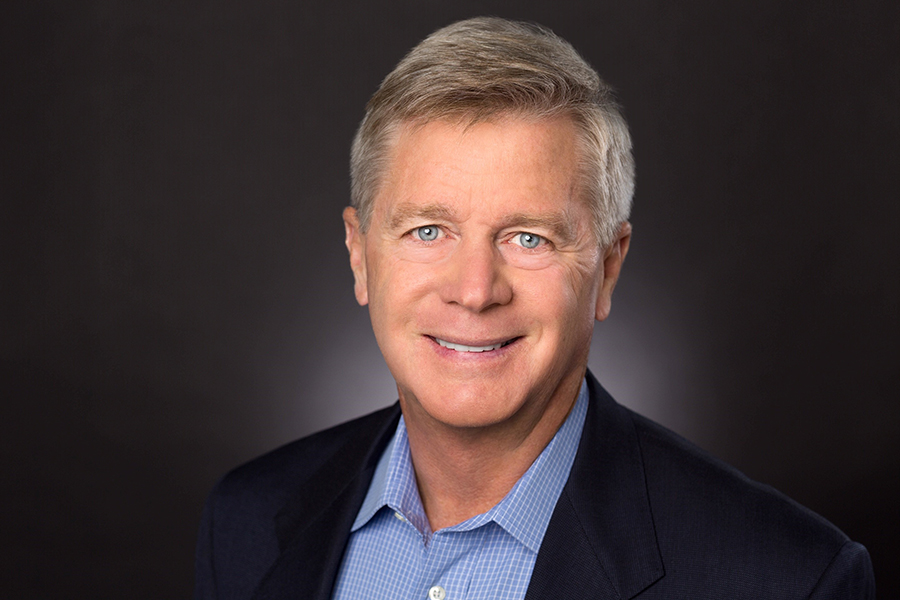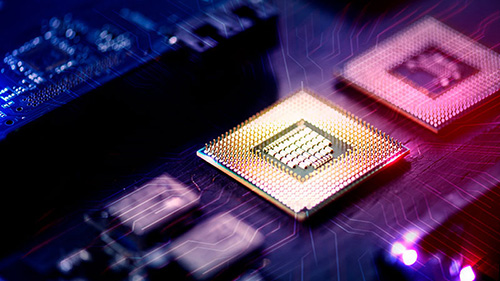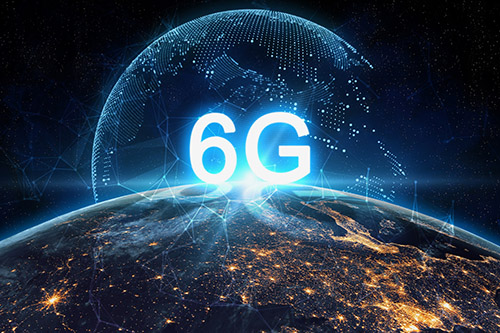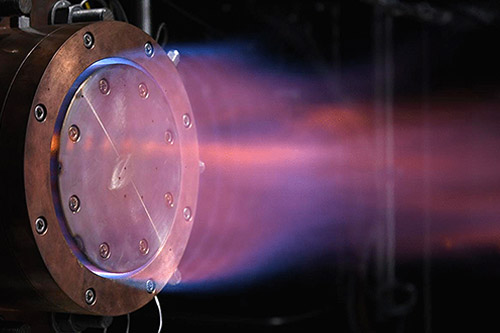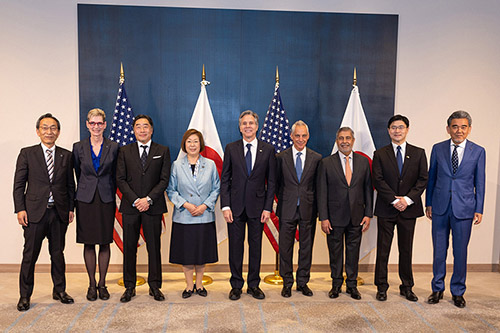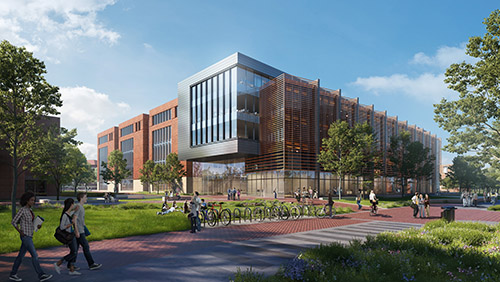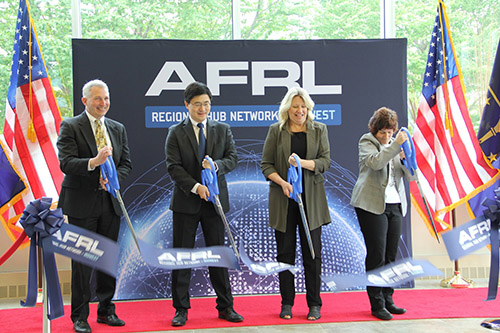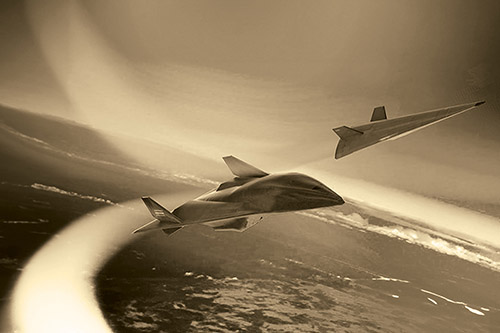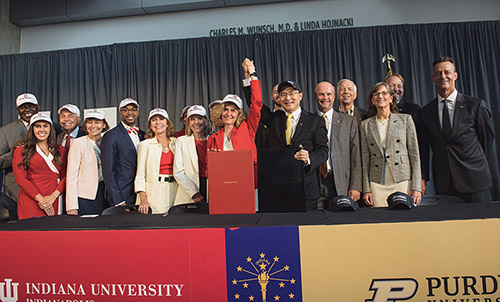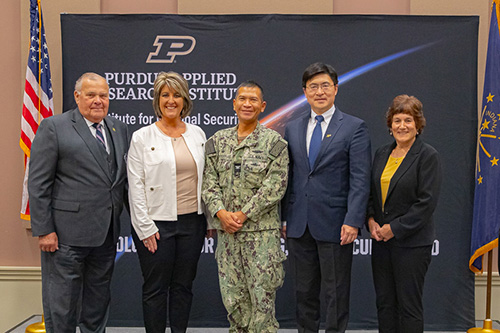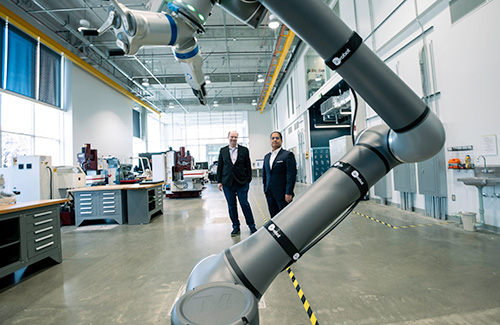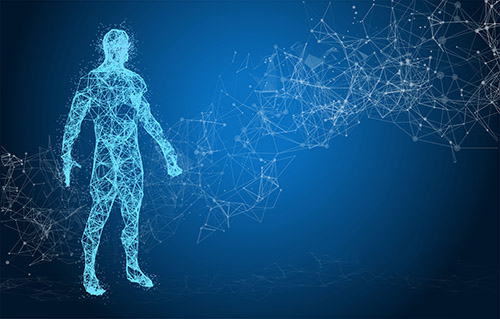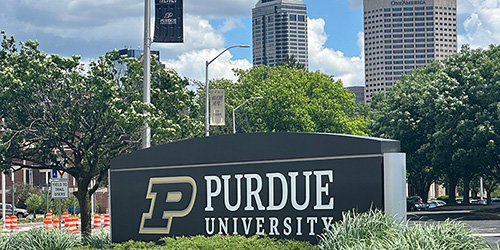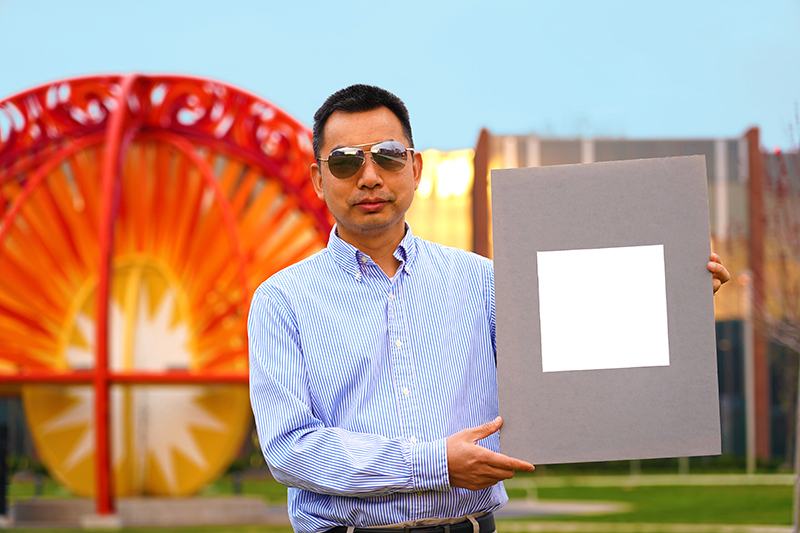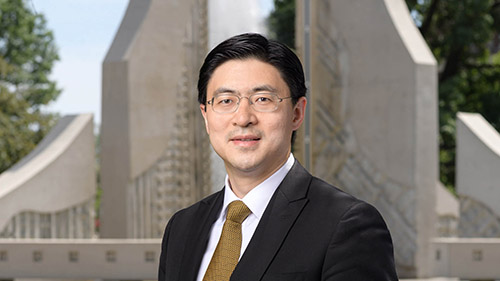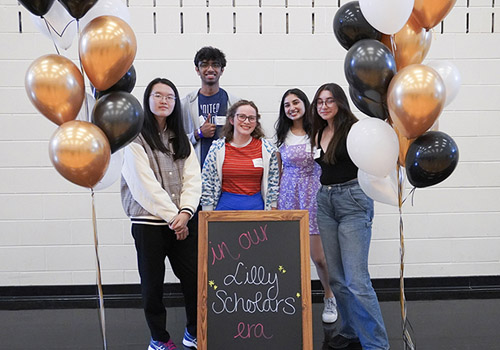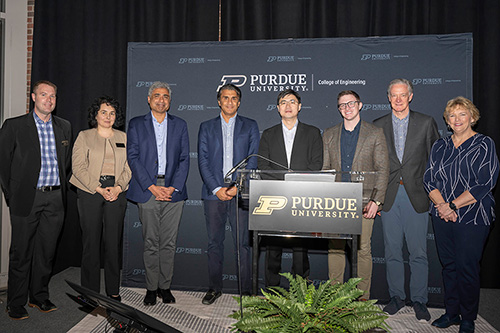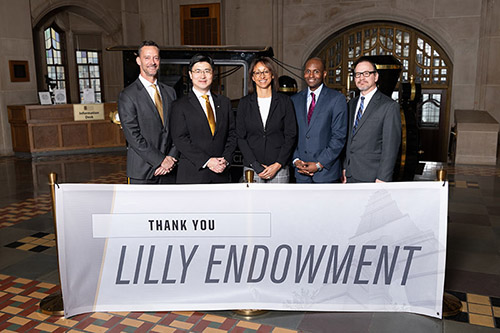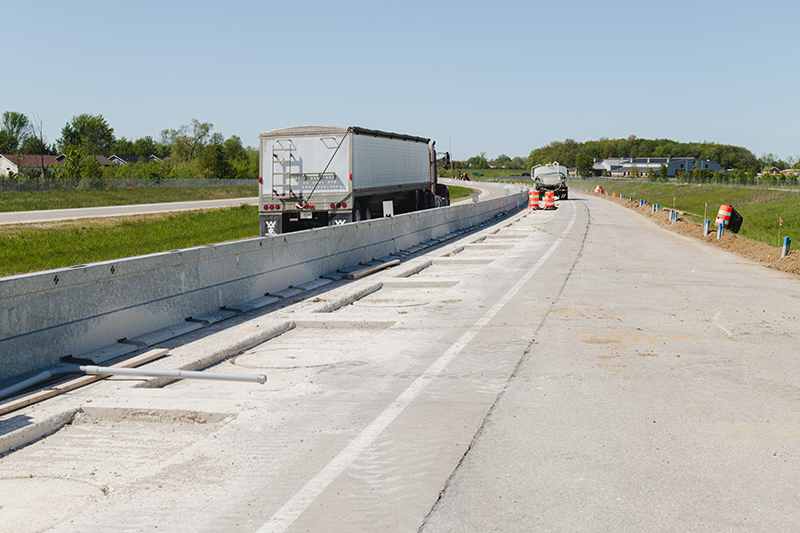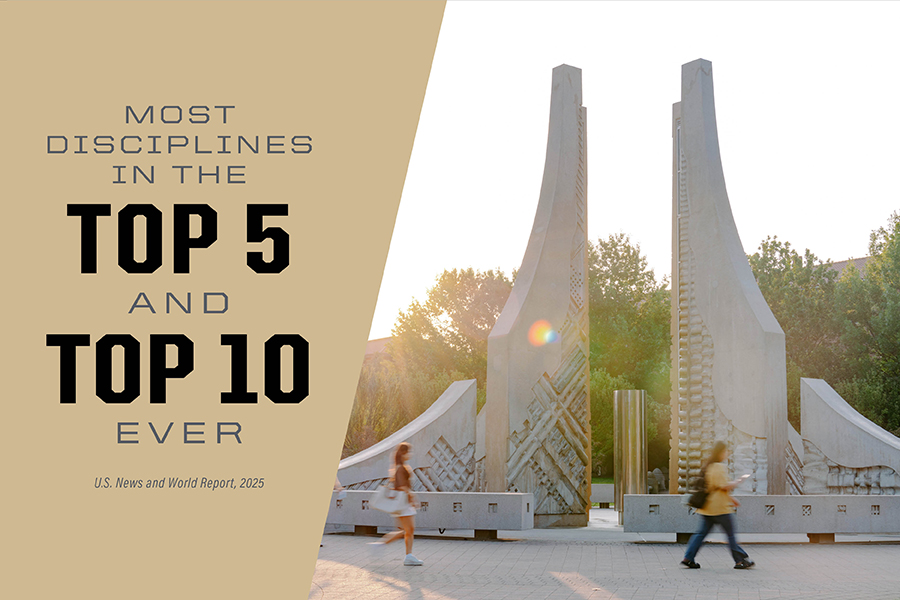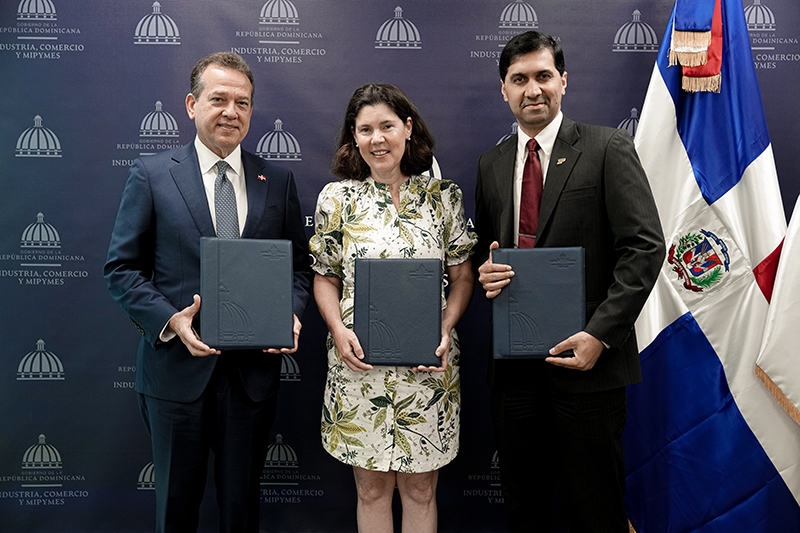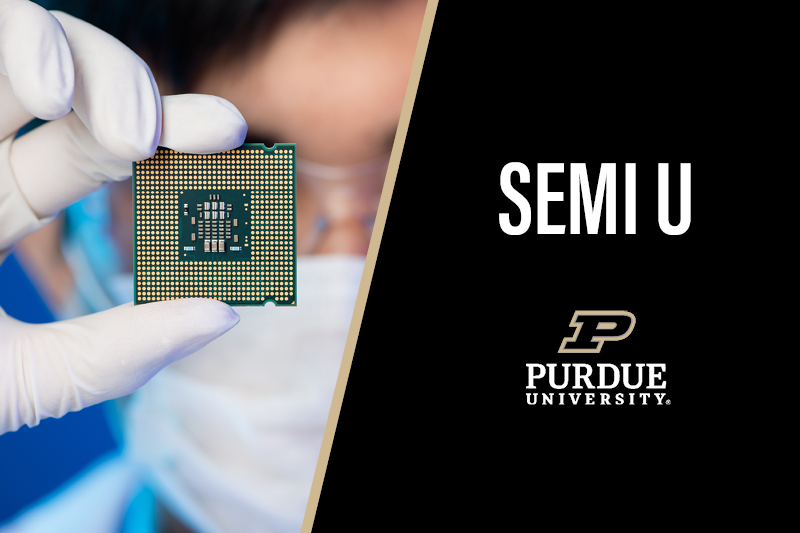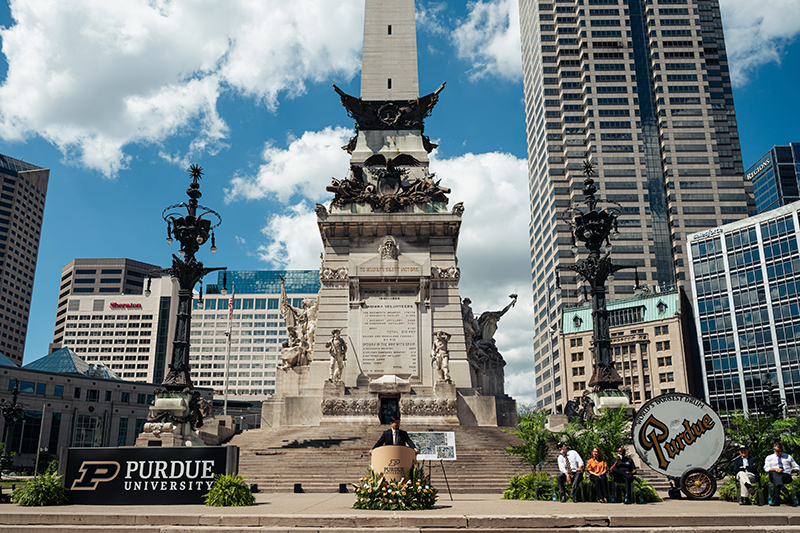Celebrating 150 Years of Purdue Engineering
From pioneering medical technologies and space exploration to establishing the nation's first Women in Engineering Program and the National Society of Black Engineers, our storied past is the foundation of future innovations and breakthroughs.
1862
1862
Morill Land Grant College Act Passes
The Morrill Act was signed by President Abraham Lincoln on July 2, 1862, granting public lands to each state to sell and use the proceeds of said sale to maintain a college teaching “agriculture and the mechanic arts.” This birth of land-grant institutions led to the establishment of Purdue University and 67 other colleges and universities across the United States. Purdue is Indiana’s sole land-grant institution.
1871
1871
Ground Breaks on the First Campus Buildings
First buildings included the Boiler and Gas House, the Military Hall and Gymnasium, Ladies Hall, Purdue Hall, and the Pharmacy Building - all completed by 1874. None remain today.
1874
1874
Engineering's Beginning
President Abraham C. Shortridge became Purdue's second president. Shortly afterwards he created the first four-year courses of civil and mechanical engineering at Purdue.
1874
1874
Purdue University opens.
While Purdue was founded in 1869 after John Purdue, a local businessman, made a generous donation of land and money, it took five years to locate, build and open the university in the fall of 1874. Classes commenced with 39 students and six instructors.
1874
1874
First Professor of Engineering Hired
William King Eldrige was the first engineering student to enroll at Purdue, with William B. Morgan serving as the university’s first engineering professor. Morgan taught in both the engineering and mathematics fields.
1876
1876
Emerson E. White Named President of Purdue University
Under President White’s leadership, engineering and agriculture were the focus of the university in compliance with the Morrill Act. During White’s tenure as president, he launched Purdue’s first four-year program, the School of Mechanical Engineering.
1877
1877
William King Eldrige (BSCE 1877)
That one student, who enrolled in Purdue Engineering 150 years ago in 1874, was Purdue’s first engineering graduate. Following Eldridge’s lead, more than 4,000 engineers graduated from Purdue’s College of Engineering in 2024.
1882
1882
W. F. M. Goss Establishes the School of Mechanical Engineering
The same year he established the School of Mechanical Engineering, Goss also started construction of Purdue's first mechanical engineering lab in what was then the Pharmacy Building, or "Building No. 2." Research was conducted in this first lab by five undergraduate students on mechanical bench work. Goss went on to become the first dean of the Purdue Schools of Engineering.
1883
1883
James H. Smart Named President of Purdue University
Smart served as the fourth president of Purdue University from August 23, 1883 until his death in January of 1900. Known in Purdue history as “the engineers’ president,” Smart and W.F.M. Goss guided Purdue engineering into a leadership position at the start of the 20th century.
1887
1887
School of Civil Engineering Established
The school formed with 29 students headed by one professor. The Purdue Road Show was launched in 1915 as part of the school.
1888
1888
Elwood Mead (BSAg 1882, MSCE 1888, Honorary Doctorate 1904)
Mead was Purdue agricultural engineering’s first graduate, who later received Purdue’s first honorary doctorate. He went on to become the chief engineer behind the construction of the Hoover Dam, which was completed in 1936. The dam's reservoir -- the largest man-made reservoir -- bears his name, Lake Mead.
1888
1888
School of Electrical Engineering Established
School formed with concentration in power generation and distribution. Purdue moved quickly to establish a leading role in the study of electricity, and by the end of the decade a new building devoted to the study of electricity was completed. The Electrical Engineering Laboratory contained rooms for batteries, dynamos, a magnetism room, laboratories, and electrical testing rooms. George T. Ashley, class of 1891, would be the first to receive a Bachelor of Mechanical Engineering in Electrical Engineering. (That degree designation continued until 1896.)
1890
1890
Michael Golden Begins Teaching Practical Mechanics
After being hired by W.F.M. Goss in 1890, Golden taught Practical Mechanics at Purdue University until his retirement in 1916. While teaching at the university, Golden attended MIT, where he earned a bachelor and a professional degree in mechanical engineering. He paid for his tuition by using extra cash he earned as a boxer. In 1920, the Popular Mechanics Building was renamed in Golden’s honor.
1891
1891
Arrival of Original "Boilermaker Special"
The 85,000-pound test locomotive Schenectady, the original “Boilermaker Special,” arrived at Purdue to be used in the world’s first locomotive testing lab.
1893
1893
Early Success Story
David E. Ross was an extremely successful businessman, starting four companies and holding 88 patents. He was named to Purdue’s Board of Trustees in 1921, becoming board president in 1927 and serving in said role until his death. His many notable contributions to the university include over $1.6 million in donations as well as the creation of the Purdue Research Foundation, Purdue Airport and Ross-Ade Stadium.
1894
1894
David Robert Lewis (BSCE 1894)
Lewis was Purdue’s first African American engineering graduate. His senior thesis was titled "Highway Road Construction." From 1894 to 1906, he held the position of mechanical drawing instructor at Armstrong & Slater Memorial Trade School at Hampton Normal and Agricultural Institute in Virginia. Later, he would start a successful career as a real estate broker in Pittsburgh.
1894
1894
Heavilon Hall
Construction was completed on the new home for Purdue Engineering. Four days later, the building burned to the ground. The phrase “one brick higher” refers to President Smart’s vow to rebuild Heavilon, and it was rebuilt in the early 1900s. The new state-of-the-art building had been constructed around the existing Mechanical Laboratory and contained a foundry, wood shop, engineering laboratory, machine room, forge room, offices, classrooms, a museum, and a boiler room. It housed the Mechanical Engineering, Civil Engineering, and Practical Mechanics Departments.
1894
1894
Raymond C. Ewry
Before Michael Phelps, athlete Ray Ewry (BSME 1894, MSME 1897) held the record for 100 years as the U.S. Olympian with the most individual gold medals (8). Today, Purdue’s Ray Ewry Sports Engineering Center bears his name.
1897
1897
Martha Dick Stevens (BSCE 1897)
Stevens was Purdue’s first female engineering graduate, earning a Bachelor of Science in Civil Engineering and a Master of Science in 1898.
1900
1900
Father of Radio Broadcasting
Reginald Fessenden succeeded in sending the first wireless transmission of the human voice-radio as we know it today. He would later be known as the father of radio broadcasting. In 1892 Fessenden was appointed as a professor for the newly formed Electrical Engineering Department at Purdue and became the third head of Purdue ECE.
1906
1906
Civil Engineering Building
What would be renamed Grissom Hall, is built to house the increasing number of students in the growing school. In 2024, U.S. News & World Report ranked civil engineering’s online graduate program #2 and its undergraduate program #4 in the U.S.
1908
1908
Originator of the Word ‘Electronics’
In 1927, Orestes Hampton Caldwell (BSEE 1908) was appointed to the newly established Federal Radio Commission, where he garnered a reputation as the most technologically proficient commissioner.
1908
1908
Purdue’s First Aviator
J. Clifford Turpin (ME 1908) joined the Wright brothers at the Wright Company, where he was tasked with working on airplane engines and also attended the Wright Flying School. Turpin became the first Purdue alum to pilot an aircraft. He was a pilot on the Wright Exhibition Team and was a national superstar in flight. As an instructor, Turpin helped teach Henry “Hap” Arnold to fly, who became known as the Father of the U.S. Air Force.
1908
1908
Commander of First Around-the-World Flight
Frederick Martin (ME 1908) became an Army pilot after World War 1. In 1924, he organized, planned, and led an exhibition of four planes flying around the world. This historic world mission was a success, but Martin went missing for 10 days and was unable to complete the flight. Later, Martin served as a major general and was placed in charge of U.S. Army Air Forces in Hawaii. He and his Navy counterpart Patrick Bellinger correctly predicted Japan’s Pearl Harbor attack but were ignored.
1909
1909
‘Father of the Science of Seeing’
As director of GE’s Lighting Research Laboratory from 1924 to 1949, Matthew Luckiesh (BSEE 1909) focused his research on "light and vision."
1911
1911
School of Chemical Engineering Established
School formed under the direction of Percy N. Evans, chair of the department from 1900 to 1925, who said, “We’ve got to build a big building. Chemistry is going to grow!”
1913
1913
Purdue Engineering Review Includes Undergraduate Research for First Time
The Review announced that in 1914 it would include articles covering undergraduate student research papers in mechanical, chemical, civil and electric engineering fields for the first time.
1914
1914
One of the Greatest All-Around College Athletes of All-Time
Elmer “Ollie” Oliphant (ME 1914) earned nine varsity letters in football, basketball, baseball and track, becoming Purdue’s first athlete to do so. He was Purdue’s first All-American, honored in both football and basketball. In 1912, Oliphant scored five touchdowns and 43 points in one Boilermaker Football game, a school record. After Purdue, Oliphant attended the U.S. Military Academy, where he earned another engineering undergraduate degree and continued to excel in sports. His contributions to sports landed him on the All-Time All-American team and earned him inductions into the National Football Hall of Fame, the College Football Hall of Fame, and the Purdue Athletics Hall of Fame.
1916
1916
Purdue Battery B Ordered to Patrol the U.S. Mexico Border
Purdue’s Battery B, a unit in the Indiana National Guard and a precursor to the ROTC program, became the only military unit of Purdue students called into federal service and stationed in a combat zone. In the summer of 1916, Woodrow Wilson ordered National Guard units from across the country to patrol and protect the U.S. border with Mexico against raids by Mexican revolutionaries. While the students saw little action during their time of service, the Border War provided critical experience for many Battery B men who would later serve in World War 1.
1917
1917
President Winthrop E. Stone Encourages Military Service
Winthrop Stone was Purdue University’s first vice president and fifth president. He appointed the university’s first dean of women, Carolyn E. Schoemaker, in 1913. The schools of agriculture and engineering grew rapidly during his tenure. On May 30, 1917, Stone emphasized the importance of military service, particularly for Purdue, in stating, “No other university has a higher responsibility to the nation than Purdue. Purdue, and others of like kind, was conceived and born in a spirt of service to the nation…”
1917
1917
James Manson (CE 1917)
James Manson was 22 years old when he graduated Purdue, married, and joined the Army, serving with an artillery unit in France. He also served with Purdue Battery B in Texas in 1916. Manson’s grandfather served as president of the Purdue Board of Trustees.
1918
1918
The Armory Building Completed
Purdue rebuilt its armory as the original Purdue Armory of 1874 burned in 1916. Nearly 170,000 square feet, the Armory building served as the headquarters of Purdue’s military department. During the war, engineering faculty helped train 1,634 auto mechanics, 1,278 truck-masters, 750 radio operators, and 201 concrete workers.
1918
1918
Military Barracks Built
In 1918, the War Department announced it would draft all eligible men, 18 through 45, beginning in the fall. Male students at Purdue and most of the faculty were among these eligible men. This led to government creation of the Student Army Training Corps (SATC). Barracks were built at Purdue to house men attending college classes and receiving military training.
1918
1918
Flu Pandemic Spreads through Purdue Barracks
1,500 men lived together in Purdue’s SATC barracks. In the fall of 1918, 300 men at Purdue contracted flu, ending in death for eleven of them. During the Great War, 67 Purdue men died in uniform, with at least 37 of those deaths attributable to the flu. About 45,000 American soldiers died of influenza and related pneumonia by the end of 1918.
1919
1919
Second Only to Thomas Edison in U.S. Patents
Clarence Weston Hansell (BSEE ’19, HDR ’52) held more than 300 U.S. patents, making him the second-most prolific inventor in American history.
1920
1920
“The Dean of Deans”
A. A. Potter was named dean of Purdue Engineering in 1920 and served in said role for 33 years. He added four new engineering schools and increased professional engineering course offerings. From 1945 to 1946, Potter served as Purdue’s acting president and director of the Purdue Research Foundation. Potter was known as “The Dean of Deans” due to his significant influence on the direction of engineering education in the United States during the 20th century. He served as a consultant to other schools of engineering, industry, and the government. Potter authored books and scientific papers and was the recipient of honorary doctorates from 10 universities.
1921
1921
Inventor of Fiberglass
R. Games Slayter (BSChE ’21) is credited with developing the coarse fibers that facilitated commercial production of the first fiberglass product (Fiberglas).
1921
1921
Designer of WWII Fighter Planes
Donovan R. Berlin (MSME ’21, HDR ’53) designed the P36 and P40 fighter planes -- two of the most widely used aircraft in World War II.
1922
1922
Inventor of First Electronic TV Receiver
Roscoe H. George (BSEE ’22, MSEE ’27) was also the founder of Indiana’s first TV station.
1923
1923
Materials Engineering (Metallurgy) Curriculum Created
In 1923, the foundation for the development of a curriculum in in the field of Metallurgy at Purdue University was created by Professor John Leighton Bray, the second faculty member and second Head of the School of Chemical Engineering at Purdue. The School of Chemical Engineering was renamed the School of Chemical and Metallurgical Engineering in September 1938. By 1940, the School was housed in the newly constructed Chemical and Metallurgical Engineering building (CMET), located across the Purdue mall from the School of Mechanical Engineering building. Following several subsequent name changes, the school is now known as the School of Materials Engineering.
1925
1925
Agricultural Engineering
The Agricultural Engineering Department took on the task of bringing the Industrial Revolution to agriculture. Some of the department’s first acts would prove the effectiveness of tractors to Indiana’s farmers and prove to farmers and power companies the efficiency and need for using electricity on farms. Credit: History of the Agricultural Engineering Department of Purdue University 1921-1944.
1928
1929
1929
George W. Haskins (ME 1916)
Haskins served in the Army Air Force from 1917-1922. In June 1919, Lieutenant Haskins became the first alumnus to land a plane on the Purdue campus, flying from Dayton, OH with a proposal to start an aeronautical engineering program. Elective aeronautical courses were offered by the School of Mechanical Engineering from 1921 to 1922. Haskins joined the Purdue faculty on September 1, 1929 as an associate professor of aeronautical engineering and built the program until his departure in 1937, returning to the Army Air Corps and later joining the Civil Aeronautics board. In 1969, Haskins watched as Neil Armstrong, who studied in the program he proposed and built, step on the moon. The other man on the moon that day, Buzz Aldrin, was the son of Haskin’s lifelong best friend.
1930
1930
Early Graduate in Aeronautical Engineering
Ralph Johnson, one of the nation’s earliest graduates in aeronautical engineering, would later go on to develop safe landing procedures for pilots amidst blackout conditions during WWII and patent several designs that contributed towards air safety.
1930
1930
Purdue University Airport Established
The Purdue University Airport was developed under the leadership of President Edward C. Elliott and Board Chair David Ross, who donated 122 acres of land to the University. It opened for operations in September 1934, becoming the first university-owned airport in the nation. With only a dirt runway at the start, someone once mistakenly planted corn. By 1935, there were paved runways, hangers went up, and a course was offered that taught aspiring students to fly. The U.S. started the Civilian Pilot Training Program in 1939 to prepare pilots for national defense. Prior to World War II, hundreds of pilots were trained, including Jimmy Doolittle Jr., the son of one of the country’s most famous pilots.
1933
1933
Winner of a Nobel Prize in Physics
Edward M. Purcell (BSEE ’33) obtained master's and PhD degrees in physics from Harvard University. In 1946, while conducting research at Harvard with two colleagues, Purcell made a groundbreaking discovery: nuclear magnetic resonance (NMR). This finding laid the foundation for magnetic resonance imaging (MRI), one of the most important medical advancements of the 20th century. For this contribution to science, Purcell and a colleague were awarded the Nobel Prize in Physics in 1952.
1935
1935
Amelia Earhart: Aviator. Legend. Boilermaker.
Amelia Earhart was an instructor and advisor in careers for women at Purdue from 1935 to 1937. President Elliott believed that through Earhart's professional achievements, she would serve as a role model for female students in seeking careers following graduation. A widely recognized pilot who encouraged women to fly, Earhart was hired to serve a dual role as technical adviser in aeronautics and as careers counselor for women students. At a time when opportunities for women were limited and most studied home economics at Purdue, Earhart said all people - women and men - could be whatever they wanted to be. Earhart also flew out of Purdue University Airport in the 1930s, when it became the nation’s first university-owned airport. A new terminal at Purdue University Airport was named in 2024 to honor this legendary Boilermaker aviator.
1935
1935
Lillian Gilbreth: Pioneered the Discipline of Industrial Engineering
Lillian Moller Gilbreth was an industrial engineer and efficiency expert who became Purdue’s first female engineering professor when she joined the faculty in 1935. Interested in helping to address the demands of the growing female student population, President Elliott hired two women with international reputations in 1935: Amelia Earhart and Lillian Gilbreth. Gilbreth, a pioneer in motion study, was a highly respected leader in the traditionally male professions of engineering and industry. Her research focused on combining psychology and engineering to improve efficiency in the workplace and home, pioneering the field now known as ergonomics. Gilbreth’s family life with her husband and their 12 children is the subject of the autobiographical novels “Cheaper by the Dozen” and “Belles on Their Toes,” which were written by two of their children and describe how the Gilbreths applied their efficiency studies in their home. Gilbreth was the first woman inducted into the National Academy of Engineering.
1937
1937
Golden Gate Bridge
Charles Ellis, a Purdue civil engineering professor from 1934 to 1946, was finally recognized as the true designer of the Golden Gate Bridge with a plaque installed at the bridge in 2023. Because of a dispute with Joseph Strauss, he wasn’t recognized for his work when the bridge opened in 1937.
1937
1937
George Welch Begins Studies at Purdue
Welch completed three years of training in mechanical engineering at Purdue before joining the Army Air Corps in 1939. He became a World War II ace. In December of 1941, Welch was at Pearl Harbor and is well known as one of the few United States Army Air Corps fighter pilots able to get airborne and engage Japanese forces. Welch is credited with shooting down more Japanese planes than anyone else and as the second man to break the sound barrier. Part of the movie Pearl Harbor is based on his story.
1938
1938
Jimmy Doolittle Jr. Enrolls in Mechanical Engineering at Purdue
His father, Jimmy Doolittle Sr., was an aviation pioneer at the time. Doolittle Sr. had set flight records and was the first to take off and land using only instruments. In April 1942, his fame was increased through receipt of a Medal of Honor and promotion to general. It was at the Purdue Airport where Doolittle Jr. joined the Civilian Pilot Training Program and learned to fly prior to entering the Army Air Corps in 1941. He flew combat missions in the Pacific.
1941
1941
Inventor of Soft Serve Ice Cream Machine
Frank Thomas Jr. (BSME ’41) also played a role in developing a grill for flame-broiling and founded the Burger Chef fast-food franchise, which at its peak operated more than 1,000 locations.
1941
1941
Purdue Becomes Military Camp
After the attack on Pearl Harbor, Purdue adjusted its academic year to enable students to graduate sooner and enter the military. The university resembled a military camp with many programs, including Navy V-12 and Army Specialized Training programs focused on engineering. By 1943, regular degree-seeing students were outnumbered two to one by military trainees. About 17,500 Boilermakers served in WWII, resulting in more than 500 deaths.
1941
1941
Campus Firing Ranges Created
Throughout campus, Purdue engaged in research and trained men and women for the war effort. Purdue’s first firing range was an abandoned gravel pit and walnut grove west of Purdue Airport. Later, a range was created beneath the west side stands at Ross-Ade Stadium, with another range located behind the Mechanical Engineering Building and others enclosed beside the men’s tennis courts. Purdue was the first university in the nation presented with the Ordinance Distinguished Service Award by the U.S. Army.
1941
1941
George A. Hawkins Named Director of U.S. Army Ordinance Research Project at Purdue
George Hawkins, Purdue alumnus, engineering professor and later Dean of Engineering, was named director of the U.S. Army Ordinance Project at Purdue during World War II. Under his direction, key developments were made that resulted in improved automatic weapons. Hawkins’ contributions led to his receipt of the War Development’s Certificate of Appreciation.
1942
1942
School of Mechanical and Aeronautical Engineering Established
Dean Potter decided by mid-1941 that aeronautical engineering should play a key role in Purdue’s growing war training effort. Under his leadership, the School of Mechanical Engineering changed its name and began the university’s first, four-year BS curriculum in aeronautical engineering. During the war, aeronautical engineering worked in conjunction with the armed forces and war industry to create specific training programs: the Air Corps Cadet Aeronautical Engineering Program, the Curtiss-Wright Cadette Programs to train young women for technical positions normally held by men at the airplane corporation, and the Navy V-12 Program.
1945
1945
School of Aeronautics Established
With WWII, aircraft proved to the world its lasting importance. Aeronautics moved into its own program about a month prior to the end of the war with Japan. The board of trustees selected the name, School of Aeronautics, because the school offered degrees in both aeronautical engineering and air transportation, being one of only two institutions in the U.S. to offer the two options. In 1956, the school became known as the School of Aeronautical Engineering, dropping the transportation degree.
1945
1945
First African American U.S. Marine Corps Officer
In 1944, Frederick C. Branch, came to Purdue to study civil engineering as part of the Navy V-12 program. The only African American in a class of 250 students, Branch excelled in his studies. On November 10, 1945, he became the first African American commissioned to an office in the U.S. Marine Corps. He served during World War II and the Korean War. In November 1995, the U.S. Senate honored Branch “on the 50th anniversary of his becoming the first African American commissioned officer” in the Marines.
1945
1945
First Head of the School of Aeronautics
Professor Elmer Bruhn joined the Purdue faculty in 1941. He was named the first head of the new School of Aeronautics upon its separation from mechanical engineering in 1945. As head, Bruhn created within aeronautical a four-year curriculum in the new field of air transportation and provided education for thousands of soldiers post-war.
1946
1946
Frederick L. Hovde Named President of Purdue University
Hovde, a chemical engineer, became president of Purdue in January 1946. Prior to Purdue, he served as chief of Rocket Ordinance Research of the National Defense Committee. Researchers under Hovde worked on triggering mechanics for the atomic bomb. During Hovde’s 25-year tenure as university president, Purdue emerged as a top research institution and established the schools of industrial engineering, materials engineering, technology and veterinary medicine. Richard Nixon honored Hovde at his retirement dinner in 1971 for helping “make the war shorter and victory sooner.”
1947
1947
Led the Team That Invented Kevlar
Robert C. “Bob” Forney (BSChE ’47, MSIE ’48, PhD ChE ’50, HDR ’81) led development of the bullet-proof synthetic that protected U.S. military troops for more than 50 years. At Purdue, the Chemical Engineering building, Forney Hall, is named in his honor.
1947
1947
Most Manufactured Item in History
John M. Atalla (MSME ’47, PhD ME ’49) was one of the inventors of the metal-oxide-semiconductor field-effect transistor (MOSFET).
1947
1947
Charles J. Pankow (BSCE ’47)
Charles Pankow came to Purdue in fall 1941, but World War II interrupted his studies. He joined the U.S. Navy near the end of the war and was stationed in Japan until 1946. The subsequent year Pankow graduated from Purdue with a degree in civil engineering. In 1963, he formed Charles Pankow, Inc., which would later be known as Charles Pankow Builders, Ltd. The company has constructed about 200 apartment buildings, condominiums, hotels and resorts, office towers, regional shopping centers, and other commercial structures. Pankow and his colleagues innovated concrete-forming technology. In 1999, the Engineering News-Record recognized him as one of the top six builders of the prior half-century.
1948
1948
Advisor to Italy on Stabilizing the ‘Leaning’ Tower of Pisa
Gerald A. “Jerry” Leonards (MSChE ’48, PhD ME ’52) was the only "non-European" invited by the Italian government to sit on an official commission tasked with investigating methods to stabilize the iconic structure.
1949
1949
Iven C. Kincheloe Jr. (BSAE ’49)
Kincheloe became a U.S. Air Force test pilot and flew the X-2 to 126,000 ft. in 1956, nearly becoming the first man in space. He was later selected to fly the X-15 to become the first American in space, but was killed in a test flight on July 26, 1958.
1950
1950
Virgil "Gus" Grissom (BSME ’50)
Gus was in the first group of astronauts in 1959 and was the second American in space in 1961. He was a command pilot for Gemini 3, the first two-person space flight. The Civil Engineering Building was renamed Virgil I. Grissom Hall in his honor.
1950
1950
First PhD in the School of Aeronautical Engineering
Commander Richard L. Duncan, U.S. Navy, was awarded the first PhD in any field at Purdue.
1953
1953
Industrial Engineering
The formation of the Industrial Engineering Department came after a long history of the discipline being taught at the university, including some courses taught by Lillian Gilbreth, the first lady of engineering. However, it was under the supervision of faculty members who had not obtained their PhD. Some of these original faculty members took leaves of absence, at great personal sacrifice, to secure their doctorates from other universities. In 2024, U.S. News & World Report ranked its online graduate program at #1 and undergraduate program at #2 in the U.S.
1953
1953
U.S. Air Force’s ‘Father of Lasers’
During the 1970s and 1980s, Retired Maj. Gen. Donald L. Lamberson (BSChE ’53) played a central role in advancing laser technology while heading the Air Force's Weapons Laboratory.
1953
1953
Freshman Engineering
With George A. Hawkins serving as dean, Purdue developed the first Freshman Engineering program of its kind in the country. It provided a plan of study that stimulated interest in engineering careers and enabled freshmen to continue their courses as upperclassmen at such a level as to provide the profession with the best prepared young engineers to be found anywhere.
1953
1953
R. Norris Shreve Leads Revitalization of University in Taiwan
Professor Shreve joined the Purdue University faculty in 1930. He helped build the School of Chemical Engineering, later serving as the head of said school. From 1953 to 1960, Shreve directed the Purdue-Taiwan Engineering Project. This effort was funded by the U.S. government and culminated in the creation of Taiwan’s National Cheng Kung University.
1955
1955
Neil Armstrong (BSAE ’55, Honorary Doctorate ’70)
Purdue alumnus Neil Armstrong was the first person to walk on the moon during the Apollo 11 mission. Considered the flagship of the College of Engineering, the Neil Armstrong Hall of Engineering is dedicated to the pioneering astronaut.
1956
1956
Inventor of the Gamma-Electric Cell
Henry T. Sampson Jr. (BSChE ’56) was the first African American to earn a PhD in nuclear engineering in the United States. He invented the groundbreaking device that converted gamma ray energy into electricity.
1956
1956
Eugene Cernan (BSEE ’56, Honorary Doctorate ’70)
Cernan was the second American to walk in space during the 1966 Gemini 9 mission. He piloted the lunar module of the Apollo 10 mission, the dress rehearsal of the moon landing in which the lunar module would descend to within 8 nautical miles of the moon in 1969. Cernan made history in 1972, when, as commander of Apollo 17, he became the last man on the moon. An acquaintance of Neil Armstrong while a student at Purdue, the first and last men to walk on the moon would later become long-time friends.
1957
1957
Roger Chaffee (BSAE ’57)
Chaffee became an astronaut, but prior to going to space, he died with Gus Grissom on Jan. 27, 1967, in the Apollo 1 flash fire at Cape Kennedy. He was awarded the Congressional Space Medal, the U.S. space program’s highest honor, posthumously in 1997 by President Bill Clinton.
1958
1958
The Navy Enlisted Scientific Education Program (NESEP) Begins at Purdue
Between 1958 and 2006, the NESEP program brought 900 U.S. Navy men and women to Purdue University to earn a four-year engineering degree. Many of the program’s graduates went on to serve their country and subsequently lead U.S. industry to the forefront in the fields of electronics and computing. Program graduate Michael Christian became a Navy pilot. Another notable program graduate, Michael McCully, received bachelor's and master's degrees in metallurgical engineering at Purdue. McCulley became an astronaut and CEO of the United Space Alliance.
1959
1959
Chemical Engineering
The School of Chemical Engineering separated from the School of Metallurgical Engineering. Since the naming of the School of Chemical Engineering and Metallurgical Engineering, research in metallurgy at Purdue expanded. In 1942, its PhD program started. In 1951, it became its own division.
1960
1960
Founder and CEO of Tellabs
Michael J. Birck (BSEE ’60) was a global leader in producing voice and data networking products. His legacy lives on at Purdue through the Birck Nanotechnology Center and the Birck Boilermaker Golf Complex.
1960
1960
Inventor of the Globally Ubiquitous Barcode
Paul McEnroe (MSEE ’60) and his team developed the magnetic code and strip for retail use, as well as barcode scanners, both hand-held (for which McEnroe received the patent) and fixed, integrated into checkout stands.
1960
1960
Nuclear Engineering
The emergence of the Nuclear Engineering School at Purdue occurred in 1960. It was one of the earliest nuclear engineering programs established in the U.S. Many within the initial program had participated in the Manhattan Project, along with other Purdue programs. The program soon had its own experimental reactor in 1962, PUR-1 - the first and only nuclear reactor operating in Indiana. In 2019, the reactor and facility was upgraded as the first entirely digital nuclear reactor instrumentation and control system in the nation.
1962
1962
Creator of World’s First Artificial Kidney
In 1988, Ben J. Lipps (BSChE ’62) became chief executive officer at Fresenius USA, the world's largest fully integrated dialysis products and services company.
1962
1962
Robert L. “Bob” Bowen (MSCE ’62, HDR ’07)
As founder and CEO of Bowen Engineering Company, his legacy lives on at Purdue through the Robert L. and Terry L. Bowen Laboratory for Large-Scale Civil Engineering Research as well as scholarships awarded to students.
1963
1963
Development Lead for NASA’s Hypersonic and Transatmospheric Flight
Lana M. Couch (BSAAE ’63) culminated her career with her appointment as director of the National Aero-Space Plane Office at Langley.
1967
1967
Managed More Than One-Third of the World’s Securities
Peter K. Lambertus (BSEE ’67) founded Charles River Development, a highly successful financial services company. Lambertus Hall in Purdue’s Gateway Complex, which opened in 2022, is named after him.
1968
1968
Global Pioneer in Digital Protection
Edmund O. “Ed” Schweitzer III (BSEE ’68, MSEE ’71) began his career in 1968 at the U.S. Department of Defense. After obtaining his PhD, Schweitzer taught at Ohio University and later Washington State University. While at Washington State, Schweitzer invented the SEL-21, the first microprocessor-based protective relay, which transformed the industry. Inspired by this breakthrough, he founded Schweitzer Engineering Laboratories (SEL) in his basement in 1984. Today, the company has more than 6,000 employees, with 61 offices in the U.S. and 46 offices globally. In 2019, SEL established a manufacturing plant in the Discovery Park District at Purdue as its fourth manufacturing center.
1968
1968
Loren J. Shriver (MSAAE ’68)
Shriver became a Shuttle Astronaut and commanded flight 31, which deployed the Hubble Telescope.
1968
1968
Early Pioneer in Electrical Engineering
Josephine Webb (BSEE ’40), went on to obtain two patents for oil circuit breaker design. She also designed a full newspaper-sized fax machine with superior resolution in the mid-40s. She eventually founded Webb Consulting Company with her husband, Herbert J. Webb (BSEE ’40). The company worked for clients such as Boeing and the U.S. Bureau of Mines, specializing in electrical-electronic measurement instrumentation, communications applications, and photographic test devices. Webb is pictured with an early computer in 1968.
1969
1969
First Women in Engineering Program
Established in 1969, the Purdue Women in Engineering (WiE) Program was the first of its kind in the nation and has been a model for such programs at other universities. Since then, the enrollment of women in the College of Engineering has increased from less than one percent to the current 26 percent. Women now receive 20 percent of the undergraduate engineering degrees granted, up from less than one percent in the early 1970s.
1969
1969
First Step on the Moon
On July 20, 1969, Neil Armstrong (BSAE ’55, Honorary Doctorate ’70) became the first human to step foot on the Moon, the highlight of the Apollo 11 mission. Purdue celebrated the moon landing not only as an accomplishment “for all mankind” but also for the alumnus who became legend. The State of Indiana and the university recognized “Apollo 11 Day” on July 21, 1969. Photo credit: NASA
1970
1970
Jerry Ross (BSME ’70, MSEE ’72, Honorary Doctorate ’00)
Ross became Shuttle Astronaut and came to hold the record for the most spacewalk time.
1971
1971
National Society of Black Engineers (NSBE)
In the late 1960s, a devastating 80 percent of the black freshmen entering the engineering program dropped out. In 1971, two Purdue undergraduate students, Edward Barnette and Fred Cooper, approached the dean of engineering at Purdue University with the concept of starting the Black Society of Engineers. It has grown to more than 600 chapters and more than 24,000 active members in the U.S and abroad.
1971
1971
Academy Award Winner
Bala S. Manian earned a PhD in engineering optics in 1971. He pursued a remarkable entrepreneurial journey in Silicon Valley, where he founded several groundbreaking medical technology companies, including ReaMetrix, Digital Optics Corporation, and Quantum Dot Corporation. One notable achievement was founding Digital Optics, which developed the first three-color laser film reader/writer system. Additionally, in 1983, he co-created a pioneering technology called Industrial Light and Magic, which played a crucial role in the production of numerous blockbuster movies, such as Indiana Jones and the Last Crusade and Return of the Jedi. Manian's innovative contributions to the film industry were recognized with an Academy of Motion Pictures Arts & Sciences technical award for special effects advances in 1999.
1972
1972
Chairman and CEO of UPS
Michael L. “Mike” Eskew (BSIE ’72) commenced his career at UPS as an industrial engineering manager. During the next 30 years, he steadily progressed through the ranks of the organization. In 2002, Eskew was appointed CEO and chairman of the board of UPS, overseeing its 360,000 global employees. While at UPS, Eskew was appointed to the President’s Export Council and elected chairman of the US-China Business Council. In 2004, he was elected to the National Academy of Engineering. Currently, Eskew serves on the boards of 3M, IBM, and Eli Lilly and Company.
1973
1973
School of Aeronautics and Astronautics Established
The School of Aeronautics and Astronautics formed and affirmed the significant role astronauts had played in the school since 1957 and continue to have world-wide. Each year the school holds Purdue Space Day where former astronauts interact with the community to share their experiences and the future of space exploration.
1973
1973
Materials Engineering
The School of Materials Science and Metallurgical Engineering increased the importance of research in other areas then metallurgy, and was thus renamed the School of Materials Engineering in 1973 while under the leadership of Robert Vest, who was serving as Acting Head of the school. The school is ranked 11th in the nation with an extensive alumni network, including company presidents and vice-presidents, researchers, business leaders and university professors.
1973
1973
Astronaut Orbited the Earth 161 Times on Space Shuttle Flights
Mark N. Brown (BSAAE ’73) joined the U.S. Air Force after graduation, earning his pilot wings a year later. Over the next six years, Brown flew T-33 and F-106 aircraft, obtained a master's degree from the Air Force Institute of Technology, and completed the Air Command and Staff College. He moved to NASA’s Johnson Space Center to work on Space Shuttle contingency procedures in 1980 and became an astronaut in 1985. In the latter role, Brown orbited the Earth 161 times and logged more than 10 days in space, spanning two missions: Columbia (STS-28) in 1989 and Discovery (STS-48) in 1991. Brown, a retired Air Force colonel, received numerous honors during his career, including the Air Force Command Pilot designation and NASA Space Flight Medal.
1974
1974
Inventor of Biomedical Devices
Leslie A. Geddes, a distinguished professor, invented biomedical devices used on hundreds of thousands of patients, including the first clinical electromyograph (EMG), a respiratory monitoring system for NASA.
1974
1974
A Founder of the Society of Black Engineers at Purdue
While at Purdue, Frederick S. “Fred” Cooper III (BSEE ’74) was a three-year starter for the Boilermakers football team and a defensive captain his senior season. In 1971, while an engineering student, Cooper, with Edward Barnette, approached the dean of Engineering with the idea of creating the Society of Black Engineers (SBE), which evolved into the National Society of Black Engineers (NSBE) in 1975. Cooper served as president of Purdue’s SBE chapter from 1972 to 1974. After graduating from Purdue, he was drafted by the Detroit Lions and played as a defensive back for two seasons. Cooper then joined the Bell System, where he spent 25 years in positions in engineering, product marketing, project management, manufacturing planning, technical sales support, international market development and product management. Today, the NSBE is one of the largest student-governed organizations in the world, with more than 31,000 members worldwide.
1975
1975
Janice E. Voss (MSES ’75)
Voss became a Shuttle Astronaut, logging over 49 days in space, traveling 18.8 million miles in 779 Earth orbits on five space flights. She became the Science Director for the Kepler spacecraft at NASA Ames Research Center. The VOSS Model, a scaled model of the solar system located in Purdue’s Discovery Park, was dedicated to the late astronaut who passed away in 2012 after battling cancer.
1975
1975
Leading Texas Instruments Through Strategic Transformation
Thomas J. Engibous (BSEE ’75, MSEE ’76, HDR ’97) began his career as a design engineer in the Texas Instruments semiconductor group. Over two decades, he steadily rose through the ranks, being appointed president and CEO in 1996 and chairman of the board in 1998. Under his leadership, Texas Instruments underwent a strategic transformation from a diversified conglomerate to a focused semiconductor company with a strong global presence.
1976
1976
Political Exile to Corporate Board Member
At the age of 8, Cuban-born Carlos Hernandez (BSCE ’76) arrived in South Florida as a political exile with his parents. With an affinity for math and science, Hernandez identified civil engineering as a career goal. He flourished at Purdue. Three years after receiving his Purdue degree, Hernandez earned a law degree from the University of Miami. His education set the stage for a 40-year career that spanned engineering, procurement, manufacturing and distribution. He retired in 2020 from Fluor Corporation, one of the largest engineering and construction companies on the New York Stock Exchange, where he had worked since 2007 as corporate secretary, executive vice president, chief legal officer, and finally, chief executive officer.
1979
1979
Keith J. Krach (BSIE ’79)
Krach co-founded Ariba, Inc., a leader in business-to-business electronic commerce services and software. In 2017 as CEO of DocuSign, Krach went on a listening trip to explore whether his company should enter the China market. What he experienced there was eye-opening. From that the Krach Institute for Tech Diplomacy at Purdue was founded to ensure that technology advanced freedom, not authoritarianism.
1984
1984
CEO of Largest Fast-Food Chain in the World
In 1990, Don Thompson (BSEE ’84) embarked on a 25-year career with McDonald’s Corporation, beginning as a manager of a McDonald’s restaurant on the South Side of Chicago. He steadily climbed the corporate ladder, culminating in 2012 when he was promoted to president and CEO of McDonald’s Corporation, overseeing its more than 40,000 stores worldwide. After retiring from McDonald’s, Thompson established a venture capital firm with his wife, Liz Thompson, who received a Purdue electrical engineering degree in 1985.
1984
1984
Founder of Textronics
Stacey Burr (BSIE ’84, MSIE ’91) led the commercialization of e-textiles, creating the first wearable sensor garments for fitness and health. She co-invented 76 patented materials and process technology innovations in wearable electronics.
1985
1985
First Female Chief Scientist of the U.S. Air Force
Mica R. Endsley (MSIE ’85) made history by becoming the 34th chief scientist of the U.S. Air Force, marking the first time a human-factors engineer and a woman held this position.
1985
1985
Blind Boilermaker Became CEO of Goodwill Industries International Inc.
James D. “Jim” Gibbons (BSIE ’85) faced the challenge of losing his sight during his early years at Purdue, ultimately becoming completely blind. With the support of many on campus, Gibbons persevered and successfully completed his degree requirements. He became the first blind person to earn an MBA from Harvard University. Later Gibbons was named CEO of Goodwill Industries International Inc.
1985
1985
First NSF ERC at Purdue
Purdue engineering research was catapulted into the future with the announcement of a $17 million grant from the National Science Foundation to establish a futuristic engineering research center to develop the factory of the future. President Ronald Reagan visited the campus in April 1987 to laud the accomplishment.
1988
1988
Materials and Electrical Engineering
The new Materials and Electrical Engineering (MSEE) building is built to house the expanding Schools of Materials and Electrical Engineering.
1988
1988
Scott Tingle (MSME ’88)
After his studies at Purdue, Tingle became a highly decorated pilot in the U.S. Navy. Selected by NASA in 2009, Taylor launched into space on board Soyuz MS-07 in December 2017 and returned in June 2018. Tingle is currently in training and scheduled to command a Boeing Starliner mission to the Space Station in 2025.
1989
1989
First Woman CEO of Two Fortune 500 Companies
Patricia K. “Patti” Poppe (BSIE ’89, MSIE ’91) began her career at General Motors, rising to director of operations at the Grand River Assembly Plant. In 2005, Poppe moved to DTE Energy as director of enterprise performance excellence. Six years later, she joined Consumers Energy Company as vice president for customer experience and excellence. By 2015, Poppe had been promoted to senior vice president, overseeing distribution operations, engineering and transmissions. In 2016, she was appointed president and chief executive officer – titles she held until late 2020 when she became CEO of Pacific Gas & Electric Company, where she remains. Poppe has the distinction of being the first woman to serve as CEO of two Fortune 500 companies.
1990
1990
Business Innovator and Benefactor
Stephen D. Bechtel Jr. (BSCE ’46) was a global figure in business, public affairs and philanthropy. In 1990, he was elevated to National Honor Member by Chi Epsilon, the national civil engineering honor society. The Bechtel Innovation Design Center (BIDC), opened in 2015, honors his significant investments in Purdue to foster educational innovation.
1992
1992
Beth Moses (BSAAE ’92, MSAAE ’94)
Moses earned her Commercial Astronaut Wings from the Federal Aviation Administration.
1993
1993
American Engineer and NASA Astronaut
Janice Voss (MSES ’75) logged over 49 days in space, traveling 18.8 million miles in 779 Earth orbits on five space flights. Her first spaceflight mission was STS-57 in 1993, the first flight of the Spacehab module.
1995
1995
Agricultural and Biological Engineering
Research in agricultural engineering evolved from its focus on the mechanization and automation of American agriculture -- recognized as one of the top 20 engineering achievements of the 20th century by the National Academy of Engineering. The department focuses on the discovery of solutions to critical public issues including safe and sustainable food supplies, environmental protection and energy supplies that are both reliable and renewable.
1995
1995
Creator of Wiki
Ward Cunningham (BS Interdisciplinary Engineering ’78) created collaborative software that evolved into what is now known as the wiki. He launched the WikiWikiWeb application, which gained significant popularity through its most famous implementation, Wikipedia.
1996
1996
Cummins’ First Female CEO
Jennifer Weerts Rumsey (BSME ’96, HDR ’24) began working as an intern for Cummins, Inc. as a Purdue undergraduate. Following in the footsteps of her father, a former Cummins engineer, Rumsey has achieved a series of career milestones at one of the world’s largest power companies. In 2015, Rumsey was appointed chief technical officer, marking the first time a woman held this position in the century-old company. In 2022, she made history again by becoming Cummins’ first female CEO. The following year, Rumsey was the first woman elevated to chair of this publicly traded company with 75,000 employees.
1998
1998
Biomedical Engineering
The Hillenbrand Center was created in 1972 by a gift from Trustee William A. Hillenbrand along with a subsequent endowment from Grace Showalter, a long-time supporter of Purdue. The Hillebrand Center was integrated into the new Department of Biomedical Engineering with its establishment in 1998. In 2006, the Biomedical Engineering Building became the first biomed engineering building at a public institution in Indiana.
1999
1999
Blue Origin’s VP of Mission and Flight Operations
Audrey Powers (BSAAE ’99) started her career at NASA, where she worked on the International Space Station (ISS) Program, accumulating more than 2,000 hours in Mission Control. Powers later transitioned to Lockheed Martin, focusing on government satellite programs, while also pursuing a law degree at Santa Clara University. Powers joined Blue Origin in 2013 as vice president of Legal & Compliance. In June 2021, Powers became vice president of New Shepard Mission & Flight Operations at Blue Origin, overseeing flight operations, vehicle maintenance, and launch infrastructure. On Oct. 13, 2021, she accompanied 90-year-old William Shatner, known as Star Trek’s “Captain Kirk,” and two others aboard Mission NS-18 – an 11-minute trip to space. This made her the 27th Purdue graduate to enter outer space.
2003
2003
Youngest Purdue Engineering Graduate
Chris McNett enrolled in Purdue’s College of Engineering at the age of 13 and graduated in only three years at 16 with a remarkable 3.97 GPA in computer engineering. He pursued further education, earning a master’s degree in computer science from Stanford University, followed by a law degree from Harvard in 2014. Currently, McNett serves as a principal and intellectual property lawyer at McKool Smith in Washington, D.C.
2004
2004
Engineering Education
The School of Engineering Education was created in 2004, marking the first time any university in the country created an academic department dedicated to engineering education.
2004
2004
College of Engineering
The current No. 4 engineering program in the nation changed its name from Schools of Engineering, reflecting a shift in the discipline of engineering toward more multidisciplinary, collaborative work where boundaries between specific fields have become less distinct.
2006
2006
Division of Environmental and Ecological Engineering (EEE) Established
The Division of Environmental and Ecological Engineering (EEE) was established by the College of Engineering on July 1, 2006. EEE is a unique program from other collegiate programs because it takes an interdisciplinary and synergistic approach to solving challenges at the interface of engineering and the environment. As of 2024, this program ranks 12th among undergraduate and graduate environmental engineering programs nationwide.
2007
2007
Neil Armstrong Hall of Engineering Building Dedication
Sixteen of Purdue’s 22 astronaut alumni attended the dedication ceremony for the newly completed Neil Armstrong Hall of Engineering, including Armstrong himself. The new structure became the home of the School of Aeronautics and Astronautics, the School of Materials Engineering, the Department of Engineering Education, the Office of the Dean of Engineering, and specialized engineering programs for minorities, women, and community service. The structure was later officially named Neil Armstrong Hall of Engineering.
2011
2011
Virgin Galactic VP Second Indian-Born Woman to Fly in Space
Sirisha Bandla (BSAAE ’11) began her career at L-3 Communications as an aerospace engineer, playing a key role in designing components for advanced aircraft. Later, she moved to the Commercial Spaceflight Federation, dedicating her efforts to advancing the prospects of commercial flight. In 2015, Bandla joined Virgin Galactic as vice president for government affairs, responsible for establishing Virgin Galactic’s and Virgin Orbit's presence within the Beltway. Bandla's commitment and contributions to the aerospace sector culminated in a historic event on June 11, 2021, when she flew on the Virgin Galactic Unity 22 test flight alongside Sir Richard Branson and four others. This milestone made her the second Indian-born woman to fly to space. Bandla's achievements garnered widespread recognition, and in 2022, she was honored as one of the BBC 100 Women.
2014
2014
Global Engineering Programs (GEP)
Most U.S. businesses are global and have employees, value chains and markets extending far beyond U.S. borders. Purdue’s Office of Global Engineering Programs and Partnerships helps students through immersive, transformative international experiences. This leads to more effective engineers-graduates who can work effectively across cultural, ethnic and national boundaries and help their employers or their own businesses succeed in an increasingly interconnected world.
2014
2014
The Purdue Military Research Institute (PMRI) is Born
The PMRI partners with the Army, Navy, Marines, Air Force, and Space Force to provide graduate education to active-duty military officers at no cost. It focuses on collaboration with the military through world-class research, merit-based fellowships, summer internships, and a faculty exchange program. More active military officers have been granted graduate degrees from the PMRI than any other non-military school in the nation.
2015
2015
Lilly Endowment Awards Purdue a $40 Million Grant
Lilly Endowment provided Purdue with a $40 million grant, the largest cash donation in university history, to support initiatives designed to foster groundbreaking research, expand high tech job growth throughout Indiana as well as nationally and globally, and enhance opportunities for students. The grant provides money for the Innovation Design Center, the Flex Lab in Discovery Park and an expansion of the Zucrow Laboratories.
2016
2016
2016
Purdue, Rolls-Royce $33 Million Strategic Partnership
Rolls-Royce and Purdue University combined resources to form a $33 million jet-engine research and development program to create next-generation aircraft propulsion systems.
2016
2016
Nancy Ho Receives Top Award from President Obama
Nancy Ho, founder and president of Green Tech America Inc. and a research professor emerita in the School of Chemical Engineering, received the National Medal of Technology and Innovation from President Barack Obama on May 19.
2016
2016
Purdue School of Chemical Engineering to Bear Alumnus Name
Purdue alumnus Charles D. Davidson (BSCE ’72) and his wife Nancy made a $20 million gift to the School of Chemical Engineering and the school was renamed in his honor.
2017
2017
Purdue Researcher Solves Centuries-Old Riddle of Prince Rupert’s Drops
Srinivasan Chandrasekar, professor of industrial engineering, who began his research with Cambridge physicist Munawar Chaudhri more than 20 years earlier, solved the mystery that dates back to the 17th century.
2017
2017
Purdue Chemical Engineering Wins NSF Engineering Research Center
The Center for Innovative and Strategic Transformation of Alkane Resources (CISTAR) develops new technologies to produce fuels from U.S. shale-gas deposits that could inject $20 billion annually into the economy.
2017
2017
$18.5 Million Dollar Purdue Design Center
The Bechtel Innovation Center is a makerspace, where Purdue University students, staff and faculty can move their ideas and innovations to real-world products and impact.
2017
2017
Joining Purdue’s ‘Cradle of Astronauts’
Loral O’Hara (MSAAE ’09) was selected by NASA to join the 2017 Astronaut Candidate Class. She reported for duty in August 2017. Prior to joining NASA, the Texas native’s work focused on the engineering and operations of deep-ocean research scientific submersibles and robots. O’Hara spent 204 days in space as a flight engineer on the International Space Station for Expedition 70.
2018
2018
Center for Brain-Inspired Computing (C-BRIC)
This SRC-DARPA Center on AI tackles brain-inspired computing.
2018
2018
USAID Selects Purdue-Lead LASER PULSE Consortium for Global Challenges
Purdue University was awarded $70 million to lead a consortium to co-create research solutions for developing countries.
2019
2019
Manufacturing Design Laboratory Opens
The Manufacturing Design Laboratory, a research space dedicated to the technology-driven future of manufacturing in Indiana and across the globe, is housed in Purdue’s Composites Manufacturing and Simulation Center (CMSC), a part of the Indiana Manufacturing Institute (IMI).
2019
2019
Saab Chooses Major Site at Purdue for Defense Aviation
Purdue University-affiliated Discovery Park District Aerospace houses an aerospace production facility for the U.S. Air Force T-X pilot training program, giving flight for future projects. The new facility opened in 2021 representing a major step in both Saab’s global expansion strategy and growth and investment in the U.S.
2019
2019
Nation’s First Digitally Operated Nuclear Reactor at Purdue
Purdue University Reactor Number One was converted to digital technology. It supports public and private research partnerships at a first-of-its-kind, digitally operated nuclear reactor, licensed by the U.S. Nuclear Regulatory Commission.
2019
2019
First Woman to Fly to Space on a Commercial Vehicle
Beth Moses (BSAAE ’92, MSAAE ’94) has completed six space flights with Virgin Galactic.
2020
2020
World's First Mach 8 Quiet Wind Tunnel
Purdue University was awarded a $5.9 million contract from the Air Force Research Laboratory to develop the first quiet Mach 8 wind tunnel in the world, further solidifying the state of Indiana’s major role in one of the U.S. Department of Defense’s top technological priorities - the development of hypersonics systems.
2020
2020
Advancing Sustainability Through Powered Infrastructure for Roadway Electrification (ASPIRE)
The National Science Foundation (NSF) chose Purdue University to participate in a new Engineering Research Center dedicated to advancing sustainable, electrified transportation. This is a five-year, $26 million NSF grant, which is renewable to 10 years and $50.6 million. The center is expected to raise more than $200 million over the next decade in government and industry support.
2020
2020
Purdue to Lead National Workforce Development Project
The Scalable Asymmetric Lifecycle Engagement Microelectronics Workforce Development program (SCALE) is a $19.2 million multi-university, public-private-academic partnership used for workforce development across engineering universities across the nation.
2021
2021
Purdue Trustees Approve Building to House Mach 8 and HYPULSE Wind Tunnels
The Hypersonics and Applied Research Facility is a 65,000-square-foot facility, which houses a Mach 8 wind tunnel and a Hypersonic Pulse (HYPULSE) shock tunnel. The project was estimated to cost $41 million.
2021
2021
Purdue EE Alumnus Makes $25 Million Gift to the School of Electrical and Computer Engineering
The school was renamed the Elmore Family School of Electrical and Computer Engineering for the family of alumnus William B. Elmore (BSEE ’75, MSEE ’76).
2021
2021
Purdue College of Engineering to Offer Semiconductor Degrees and Programs
The Elmore Family School of Electrical and Computer Engineering (ECE), in partnership with Purdue’s Schools of Mechanical Engineering and Materials Engineering, announced intent to offer the new concentration-an entirely new Master of Science (MS) degree major in semiconductors and microelectronics-starting in January 2022.
2021
2021
'Lab to Life' 6G Digital Innovation Platform Launched
The launch of 'Lab to Life' was the next step in creating one of the most connected innovation communities in the nation through the evolution from 5G to 6G.
2022
2022
Rolls-Royce and Purdue Sign Strategic Alliance
Purdue and Rolls-Royce officials signed a research and testing agreement, bringing $75 million over 10 years to the university. The investment focuses primarily on Purdue’s Zucrow Laboratories.
2022
2022
Semiconductors@Purdue
In summer 2022, then-Dean of Purdue Engineering Mung Chiang announced the launch of the first comprehensive Semiconductor Degrees Program, welcomed the Skywater fab to campus, formed an R&D partnership with imec, established Purdue as a key collaborator with India Semiconductor Mission, and signed the U.S.-Japan semiconductor agreement at the G7 summit.
2023
2023
Arvind Raman Selected as New Dean of Purdue's College of Engineering
Longtime Purdue University administrator, faculty member and Boilermaker alumnus Arvind Raman was announced as the new John A. Edwardson Dean of the College of Engineering.
2023
2023
Dudley and Lambertus Halls Dedicated
The new Gateway Complex brings two disciplines - the College of Engineering and Purdue Polytechnic Institute-- together in a common physical space.
2023
2023
AFRL Regional Hub at Purdue
Through the Regional Hub Network, Air Force Research Laboratory (ARFL) scientists and engineers will engage and collaborate with universities, small and large businesses, other government agencies and venture capitalists to assemble a new science and technology ecosystem in which partners help the lab research high-risk case studies.
2023
2023
Purdue, imec, Indiana Announce Partnership
Purdue University and the state of Indiana continue to make giant leaps in semiconductor research growth with a first-of-its-kind agreement with European-based imec, a cutting-edge European nano- and digital technology innovation company.
2023
2023
Purdue Applied Research Institute (PARI)
PARI, the applied research arm of Purdue University, opened a new facility dedicated to enhancing Purdue’s world-leading capabilities in hypersonics evaluation and testing. The Hypersonics and Applied Research Facility (HARF), a $41 million, 65,000-square-foot building is home to two cutting-edge wind tunnels - the only Mach 8 quiet wind tunnel in the world and the hypersonic pulse (HYPULSE) reflected shock/expansion tunnel. It is also home to the Hypersonics Advanced Manufacturing Technology Center (HAMTC), a single location for industry partners to work on materials and manufacturing innovations and provide access to testing capabilities.
2023
2023
Purdue in Indianapolis Announced
On June 14, 2023, Purdue University trustees and Indiana University trustees simultaneously approved the agreements that will effectively dissolve IUPUI on June 30, 2024, completing a process that started in August 2022. Purdue University in Indianapolis is Purdue’s first comprehensive urban campus.
2023
2023
Purdue@Crane
Purdue@Crane will focus on hypersonics, energetic materials and trusted microelectronics. The investment will catalyze and accelerate the existing collaborative research agreements that focus on national security and defense and on semiconductors.
2023
2023
eXcellence in Manufacturing and Operations (XMO) Initiative Launched
The XMO PEI will tap Purdue’s domain excellence to build a community of faculty, students and industries at today’s intersection of physical, digital and sustainable manufacturing.
2023
2023
Engineering to Launch Three New Graduate Degrees
Purdue Engineering’s Professional Master’s Programs will introduce three new specialized professional master’s degrees -- autonomy, Internet of Things (IoT) and robotics -- beginning in the spring 2024 semester. All are based in autonomous and connected systems (ACS) and directly aligned with transformative technological advancements, cutting-edge research and long-term industry needs.
2023
2023
Purdue Launches New IN-MaC Node at Purdue University in Indianapolis
To fuel and impact the ongoing manufacturing renaissance and expand its reach across Indiana, Purdue University launched The Indiana Next-Generation Manufacturing Competitiveness Center (IN-MaC) node at Purdue University in Indianapolis in a joint venture with Purdue’s Manufacturing and Materials Research Laboratories (MMRL).
2023
2023
Leading Energy-Transition Advances and Pathways to Sustainability (LEAPS) Launched
With the launch of the newest Purdue Engineering Initiative-LEAPS (Leading Energy-Transition Advances and Pathways to Sustainability)-the university steps up to a new level of research and education innovation that will cross disciplines, link campus expertise, and empower our future engineers and entrepreneurs.
2023
2023
Inventor of the World’s ‘Whitest Paint’
A team led by Purdue professor of mechanical engineering Xiulin Ruan created the whitest paint on record – an invention that Time magazine honored as one of the Best Inventions of 2023.
2023
2023
New Stratolaunch-Purdue Partnership
Stratolaunch LLC and Purdue University announcd a partnership dedicated to accelerating the time required to design, build, test and fly hypersonic vehicles. Stratolaunch will establish the Stratolaunch Advanced Programs Office at the Convergence Center in Purdue’s Discovery Park District in West Lafayette, Indiana, to ensure the goals of their collaboration will be rapidly achieved.
2023
2023
Mung Chiang Named President of Purdue University
Chiang became Purdue’s 13th president on Jan. 1, 2023. He is also the Roscoe H. George Distinguished Professor of Electrical and Computer Engineering and served as the John A. Edwardson Dean of the College of Engineering from July 2017 to June 2022.
2024
2024
Eli Lilly Commits $42.5M to Fund Innovative Pharmaceutical Manufacturing Scholarships
The Lilly Scholars at Purdue program will offer 75-100 talented students each year full tuition with a guaranteed internship or co-op at Lilly and a promise of coordinated interaction with company leaders.
2024
2024
College of Engineering, NobleReach Foundation Announce New Degree Certificate
A groundbreaking partnership to offer a new undergraduate certificate program, Innovation for Public Service. The key objective of the program is to increase the number of engineering graduates entering public service careers, contributing as technology leaders and practical problem solvers.
2024
2024
Purdue University Receives $100 Million Commitment from Lilly Endowment
Lilly Endowment Inc. approved grants totaling $100 million to Purdue Research Foundation to support two major Purdue University initiatives, which together will elevate the university, its students and faculty and accelerate new investments in Indiana’s workforce and economy.
2024
2024
New Online Master's in AI
Interdisciplinary degree takes aim at artificial intelligence skills shortage in the workforce.
2024
2024
Semiconductor Advanced Packaging
SK Hynix announced nearly $4 billion semiconductor advanced packaging investment in Purdue Research Park.
2024
2024
First U.S. Highway Segment That Can Charge Electric Vehicles
At the “Crossroads of America,” Purdue University engineers and the Indiana Department of Transportation (INDOT) are working to make it possible for electric vehicles ranging from tractor-trailers to passenger cars to wirelessly charge while driving on highways.
2024
2024
Purdue Engineering Hits New Heights in the 2025 U.S. News & World Report Graduate Rankings
Agricultural & Biological Engineering (ABE) ranked #1 for second consecutive year and the 13th in a row in the top 2.
2024
2024
Purdue, Dominican Republic Partnership
In its ongoing drive to support near-shoring efforts of America’s semiconductor industry, Purdue University signed a memorandum of understanding (MOU) with the government of the Dominican Republic to help the country propel its microchip and microelectronics industries.
2024
2024
Purdue, SEMI partner to bolster semiconductor education
Under the memorandum of understanding, expert Purdue faculty will develop online courses to be available through SEMI U, and Purdue will issue digital badges certifying that learners have completed a course and gained the related knowledge and skills.
2024
2024
Purdue University in Indianapolis
The comprehensive urban campus will create an innovative, STEM-based collegiate experience by connecting future-ready Purdue students and faculty in Indianapolis to local businesses to accelerate Indiana’s STEM pipeline and tech ecosystem, fueling impact for central Indiana and the world.
